 Search for Flights
Search for Flights
 Search for Hotels
Search for Hotels
 Check Exchange Rates
Check Exchange Rates
 Check the Weather
Check the Weather
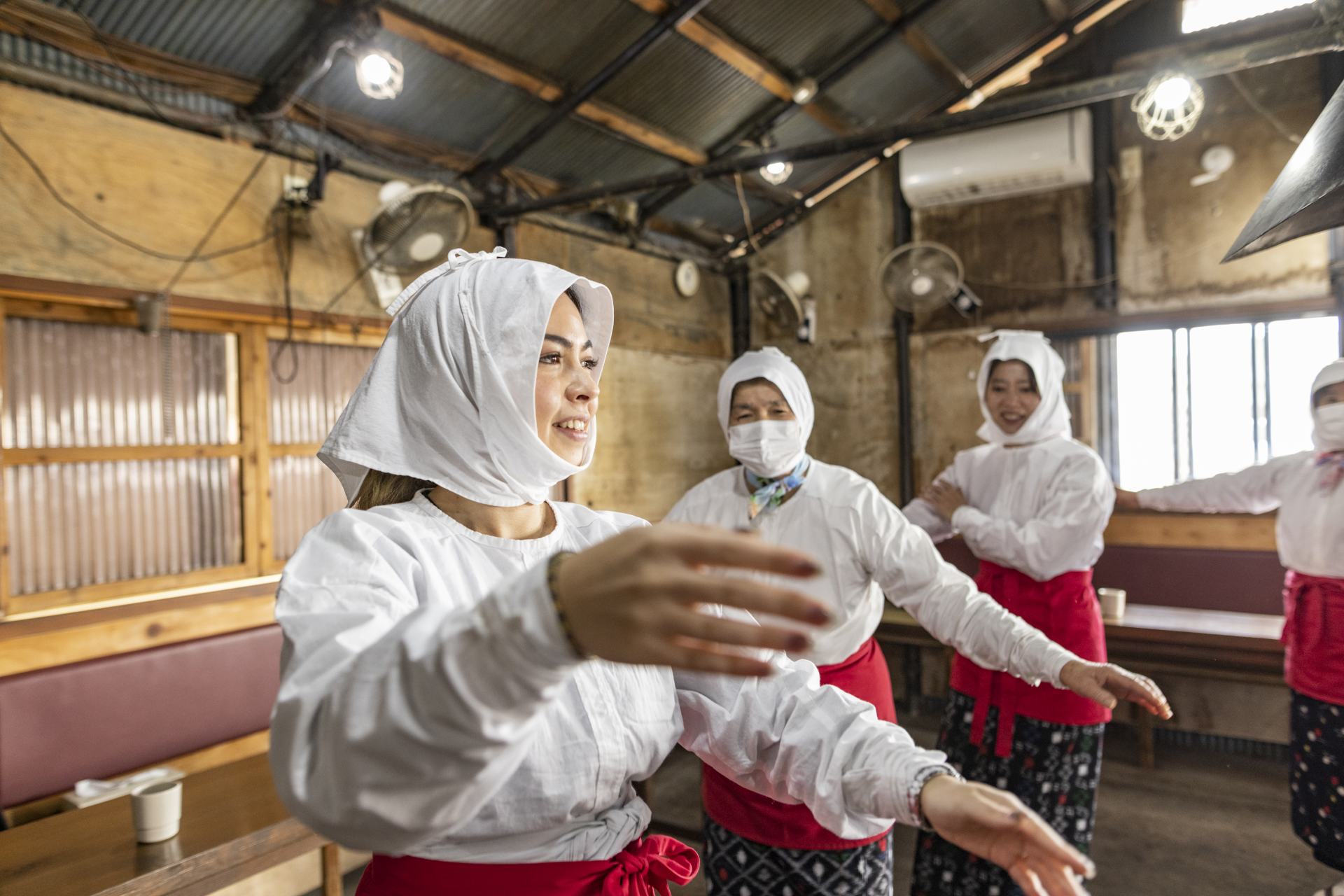
Osaka's Merchant Roads, Nara's Sumo Roots, and Mie's Ama Divers: 2-day/1-night sustainable tour experience of Japan’s cultural roots (Osaka - Nara - Mie)
Last update
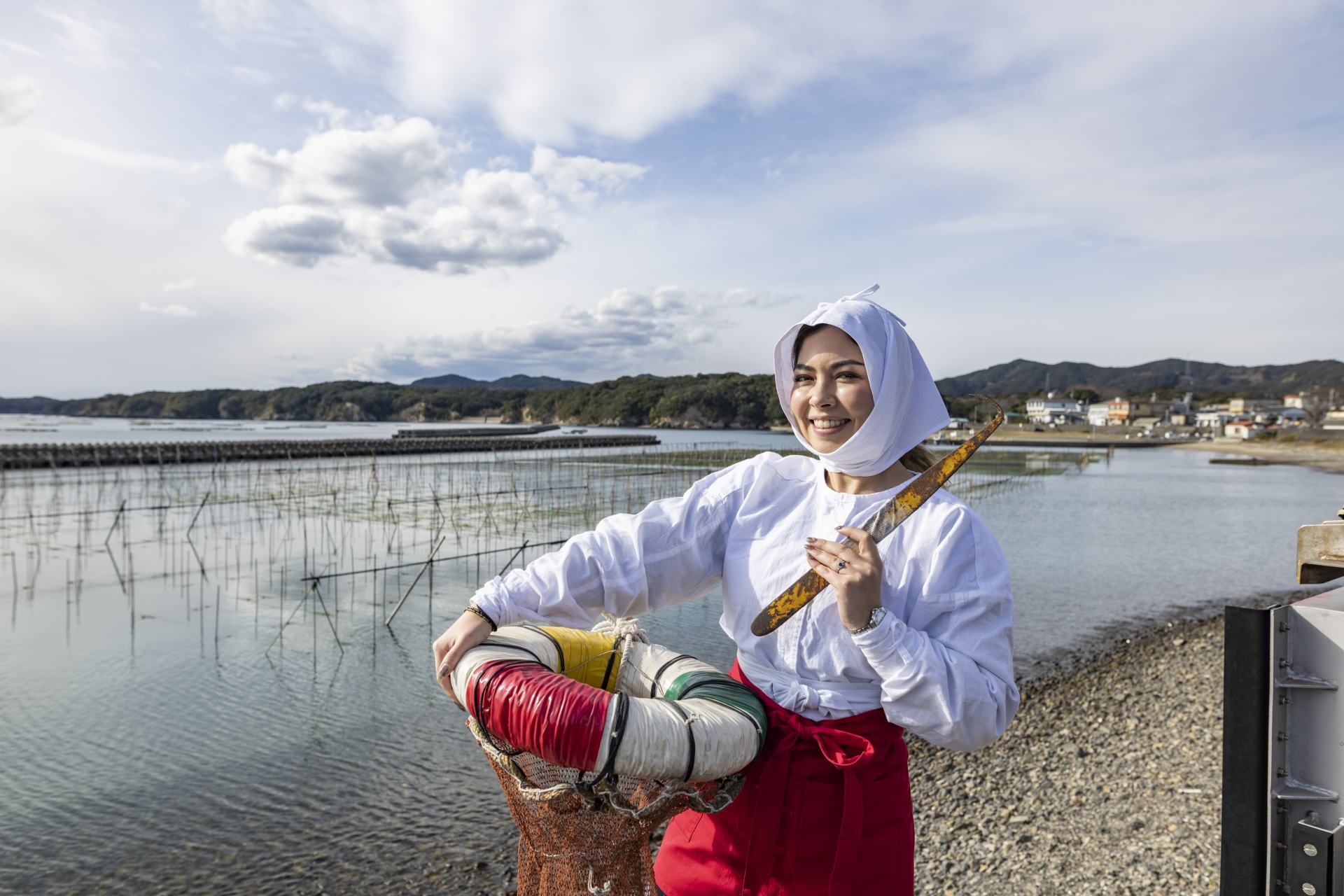
Experience dressing in the traditional ama diver wear and imagine how cold it must have been in the water!
Although the concept of ‘sustainability’ was once synonymous with environmental consciousness, the term now encompasses other important factors such as cultural and social sustainability, which aim to preserve and engage with valuable cultural assets and traditions around the world. In the Kansai region of Japan – home to the country’s former ancient capitals – a multitude of unique traditions and locations persist today, ready for visitors to come, enjoy and appreciate. This article introduces a model course that embodies sustainable tourism across Osaka, Nara, and Mie prefectures, where visitors will get an opportunity to connect with cherished local communicates, places, and cultures.
SEKAI HOTEL (Fuse, Osaka Prefecture)
Our journey commences at SEKAI HOTEL Fuse, nestled amidst 17 distinct retro Japanese arcade-style shopping streets known as shotengai. Despite the Fuse neighborhood of Higashiosaka City not being a typical tourist destination, it’s conveniently only a 20-minute direct train from the renowned Namba/Dotonbori area of Osaka. This quaint neighborhood exudes an old-time shitamachi ambience with a rich history spanning over 70 years, where the hustle and bustle comes from the ‘ordinary’ daily life of locals. The hotel ingeniously transformed several shuttered stores dispersed among two blocks of the shotengai into unique lodging facilities. The friendly staff tell guests of the community’s strong civic pride, warmly welcoming you into their community immediately.
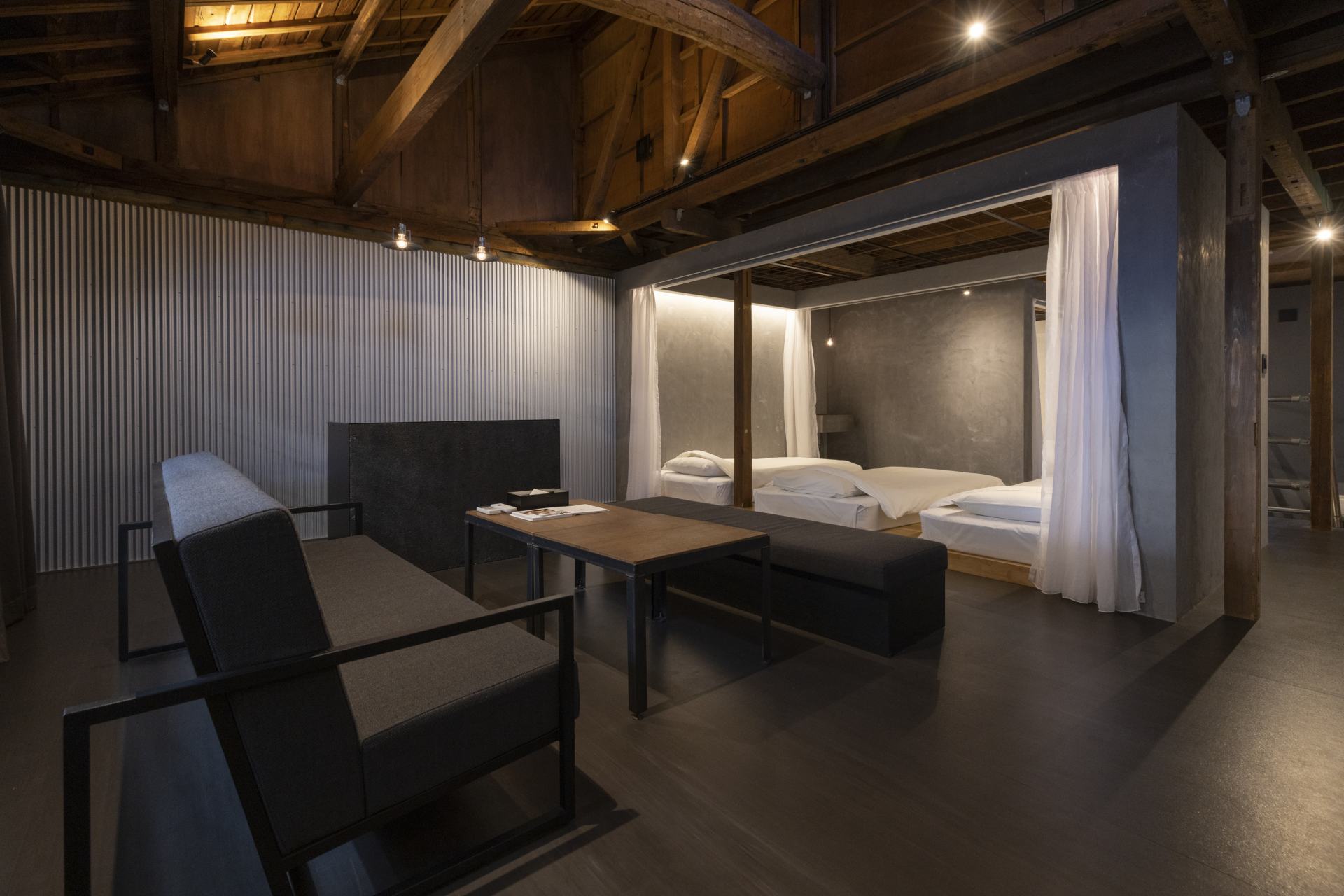
Inside look of the hotel: old merchant shops and homes reinvented as sleek accommodation.
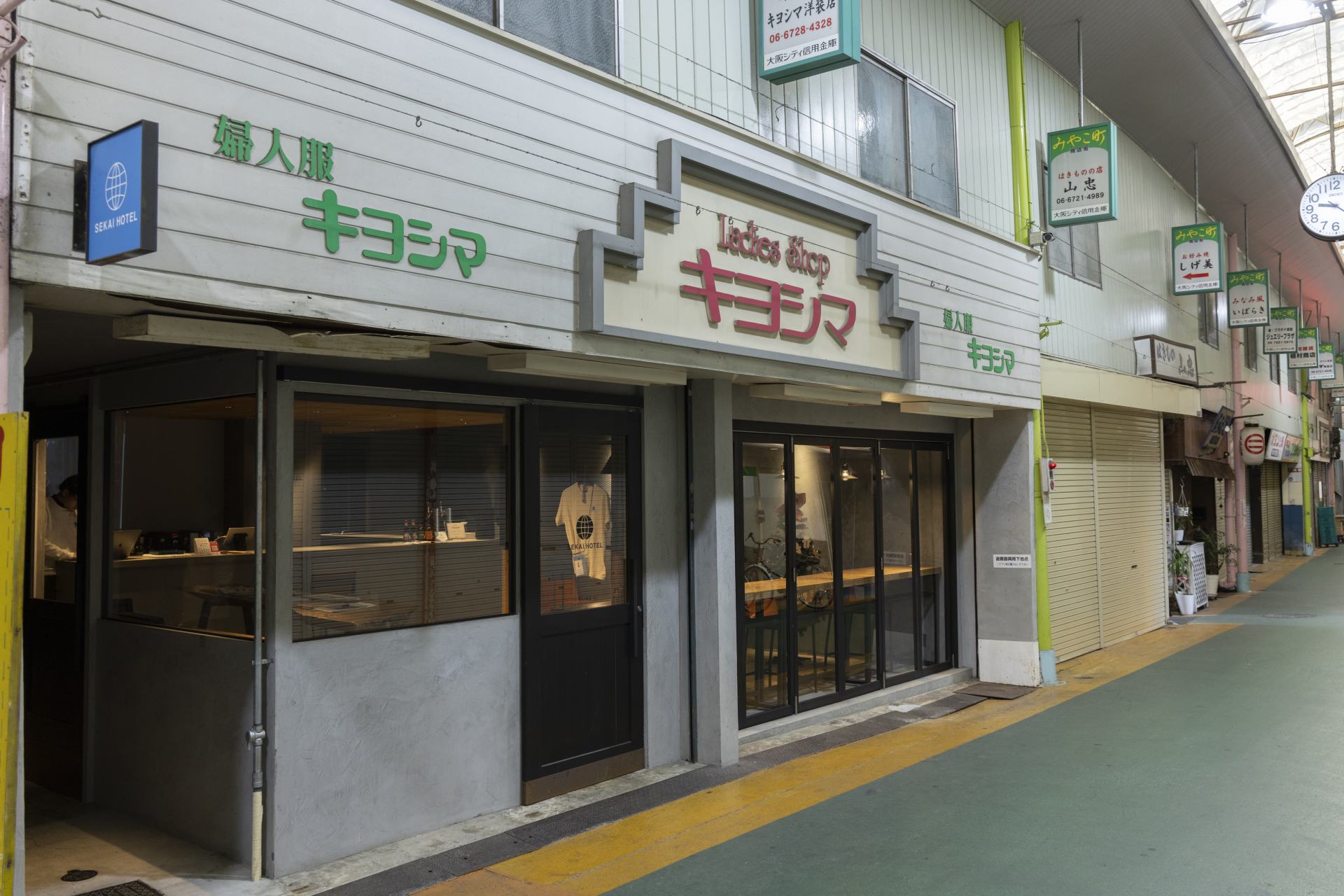
The front desk of SEKAI Hotel is nestled inside a shop that once sold women’s clothes. Keeping the original signs intact is an important way to preserve the shotengai’s rich history.
For a nominal fee of ¥1,000, guests can partake in the shotengai food tour, where knowledgeable staff guide you through the community’s history and offer a taste of traditional shitamachi cuisine. Indulge in an array of savory and sweet street foods, including tempura, karaage fried chicken, and pastries, all while interacting with the welcoming locals.
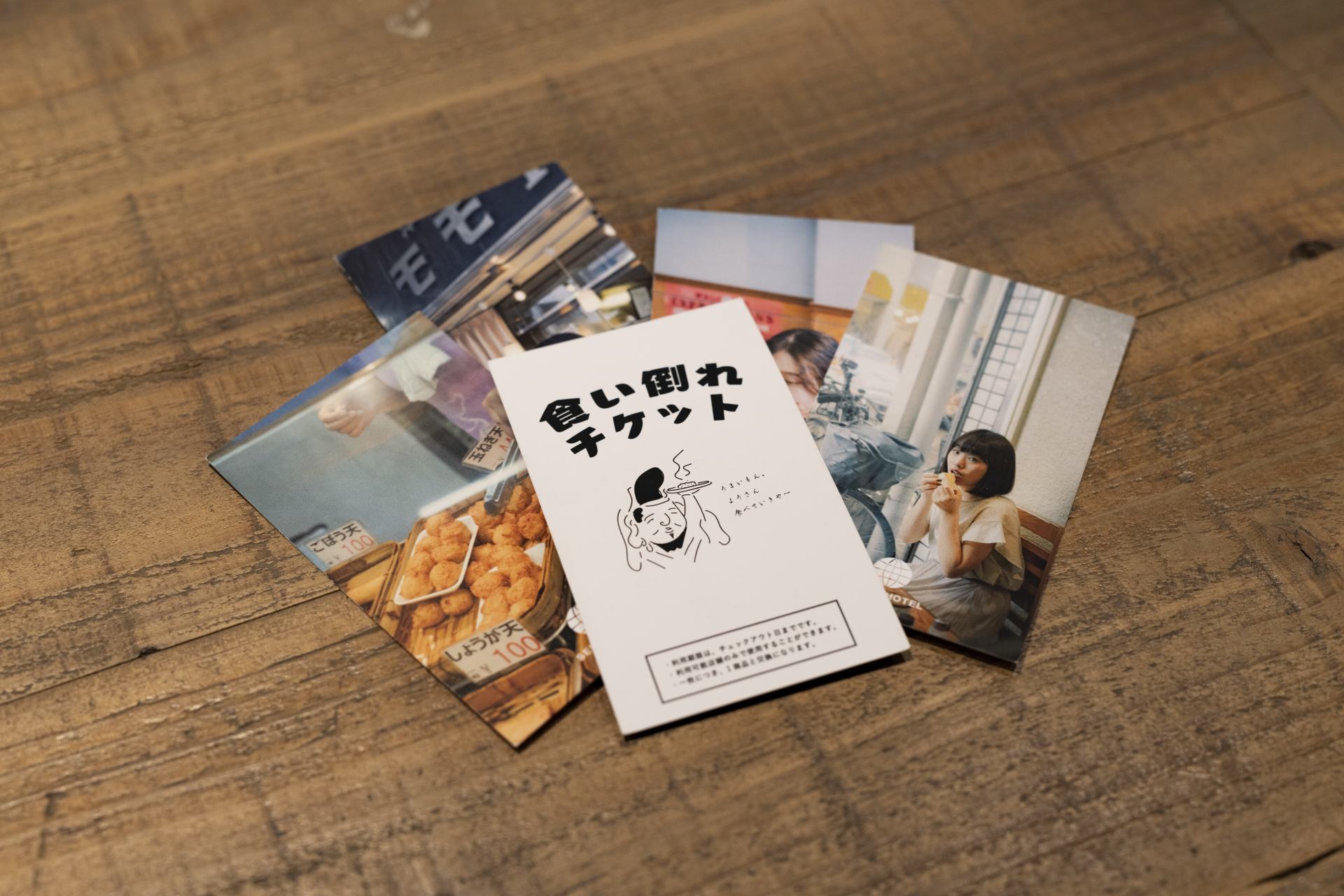
The coupon used to receive local food items on our walking food tour.
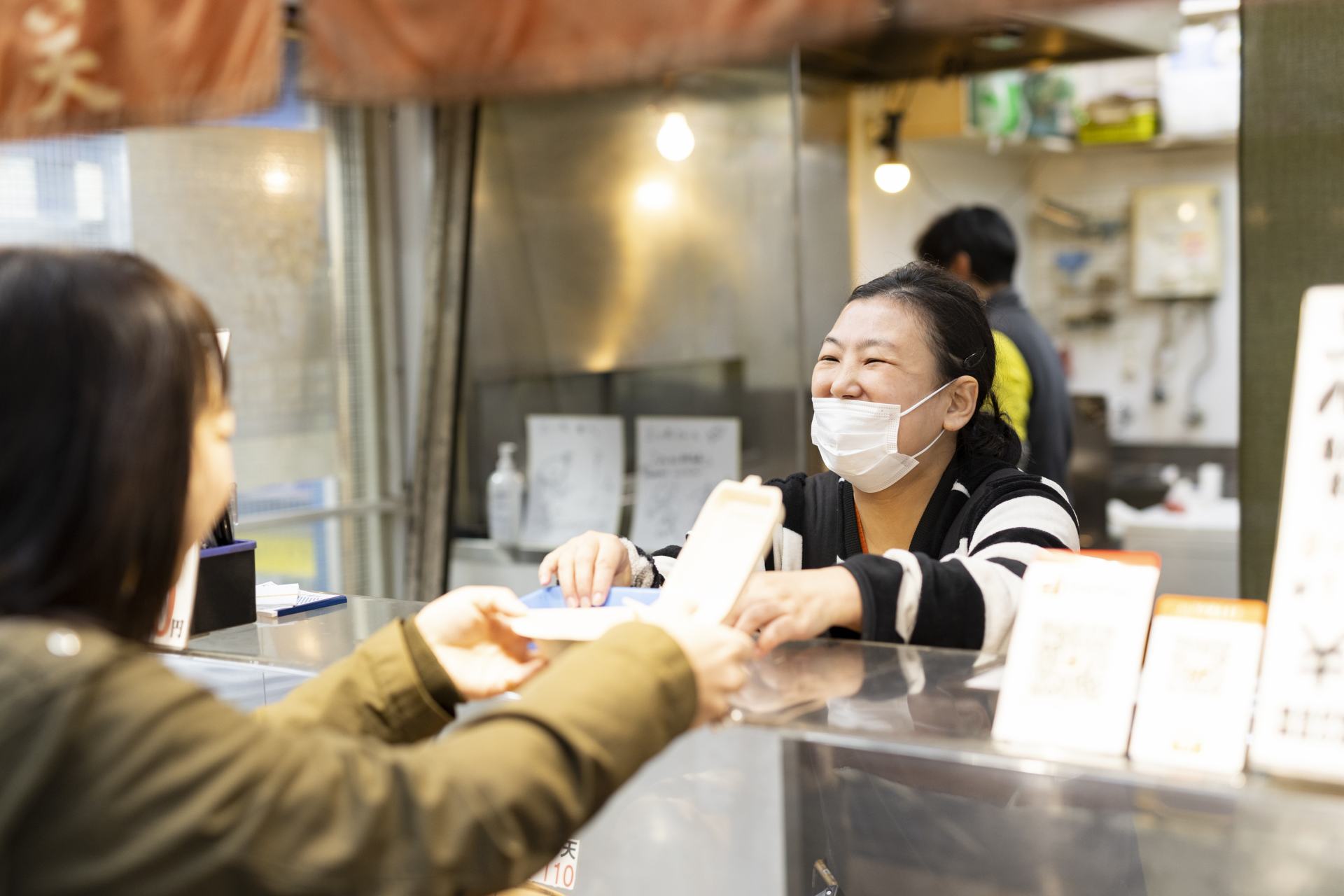
Enjoying fresh tempura and chats with merchants of Fuse.
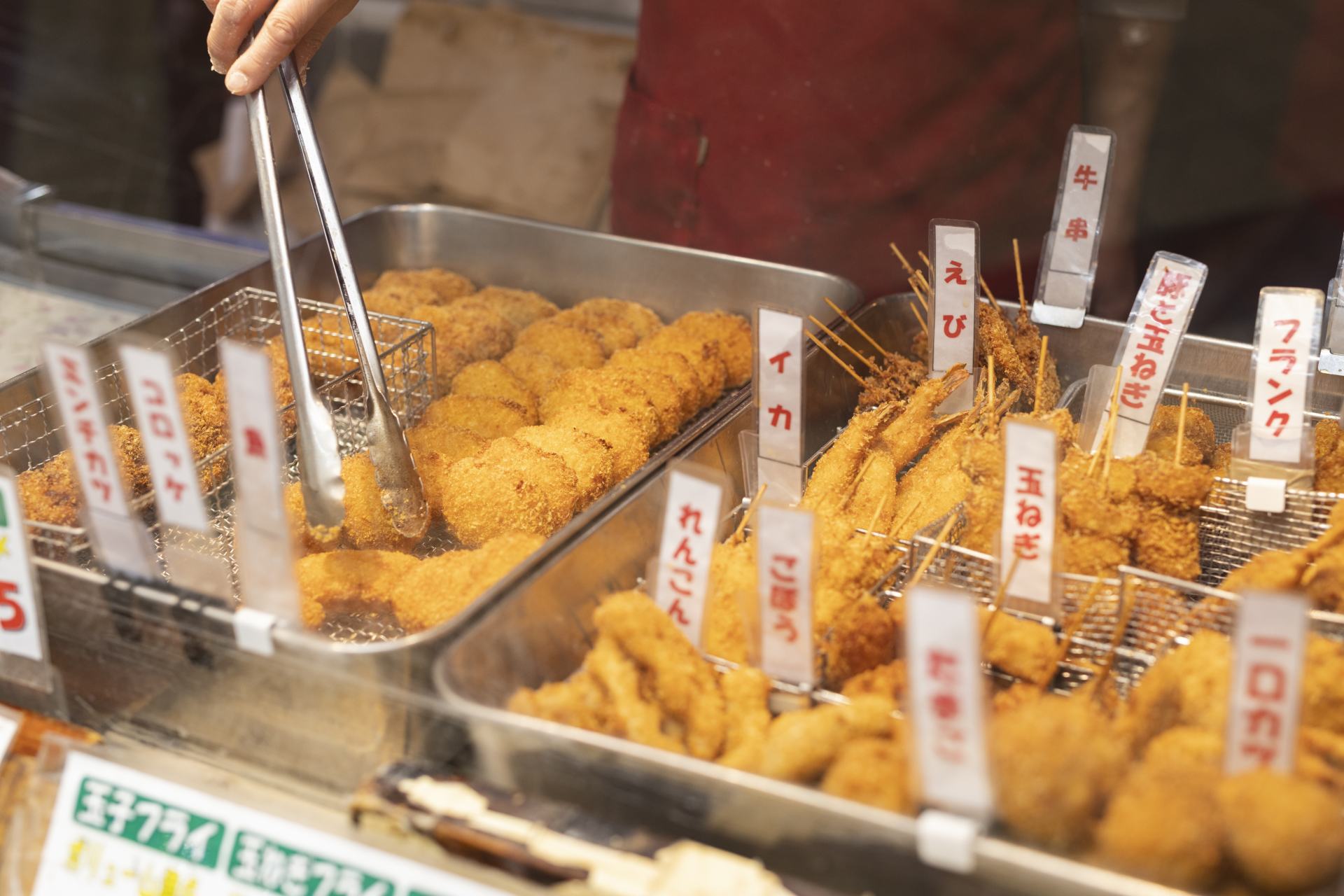
Piping hot meat and vegetable croquettes. Crisp and soft, right out of the deep fryer.
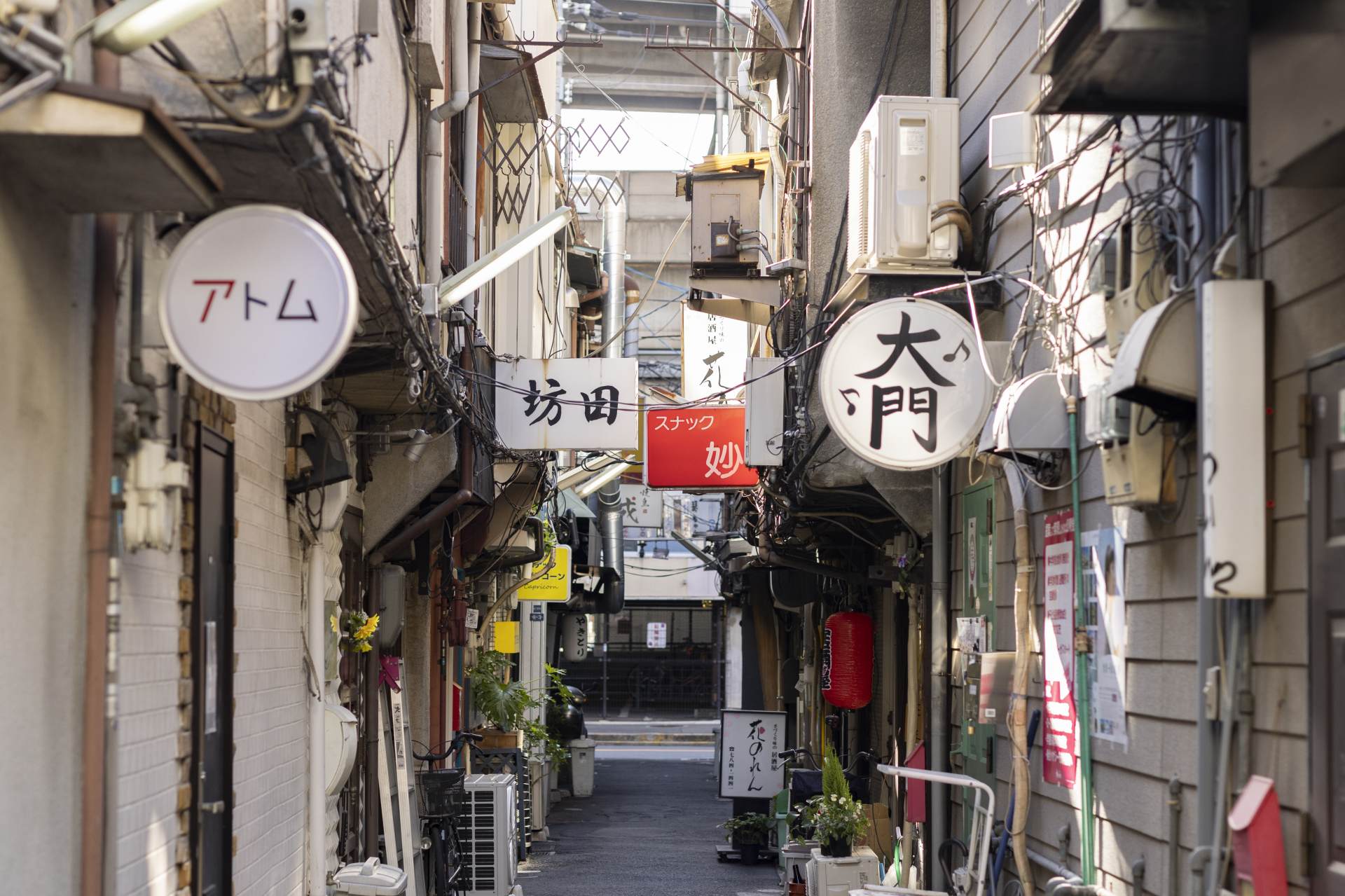
Alleys full of retro bars: they are a fascinating aspect of Japan’s nightlife that should be preserved.
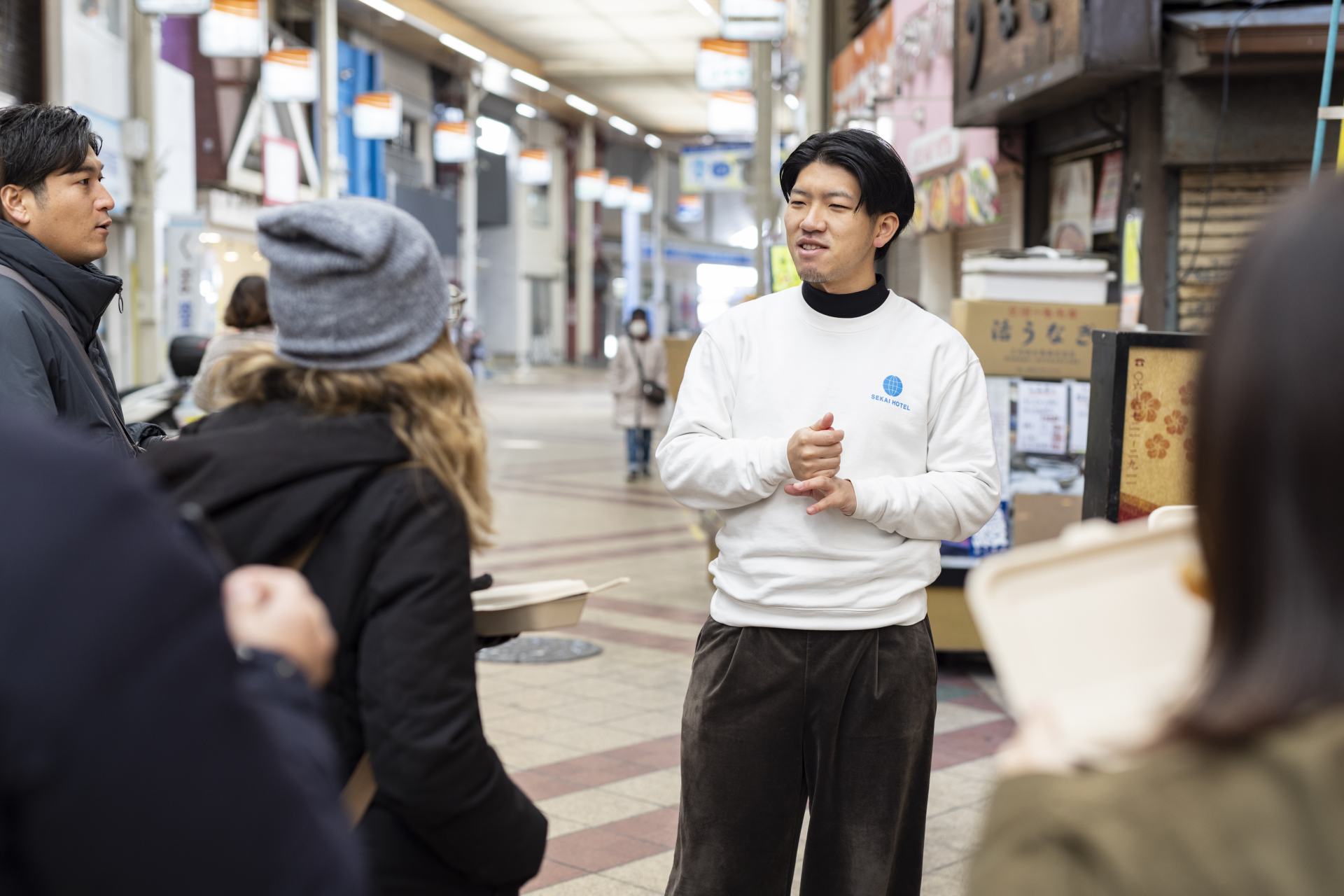
Learning about Fuse’s rich culture and community history. The staff at SEKAI Hotel are passionate about connecting their neighborhood with visitors from around the world.
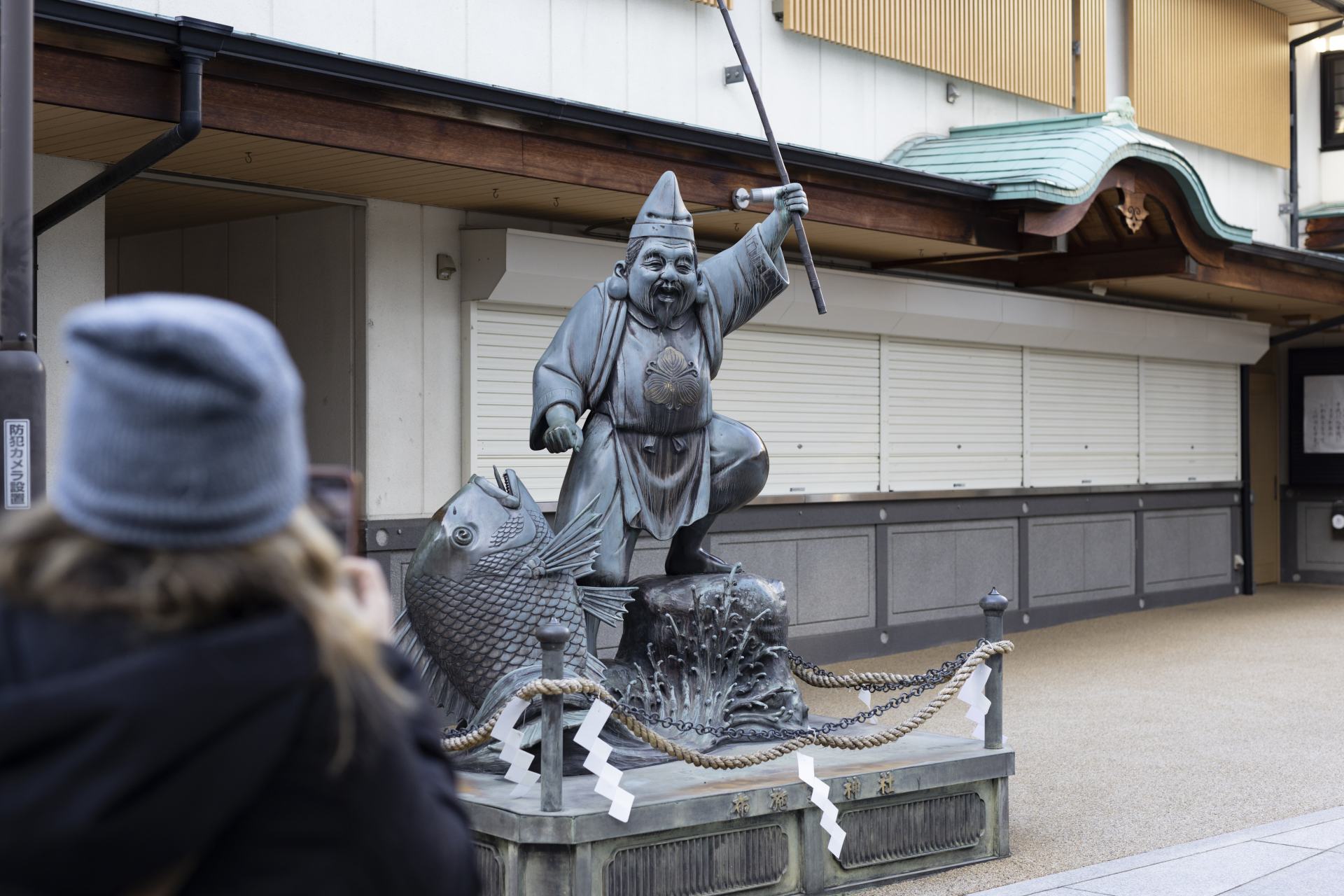
Amazed by the large statue of the deity, Ebisu, a symbol of wealth and prosperity for the merchants of Fuse.
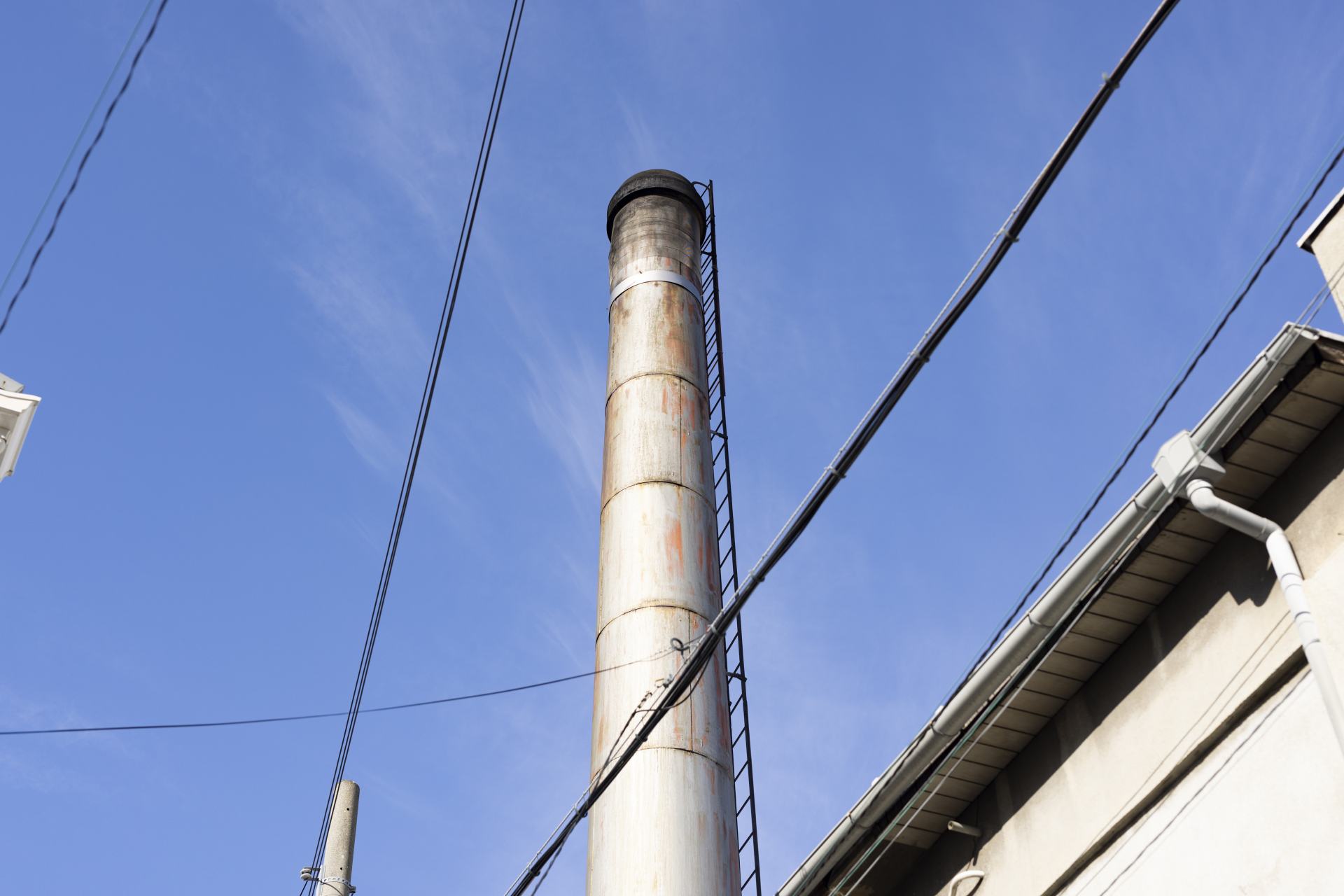
A chimney of the bathhouse.
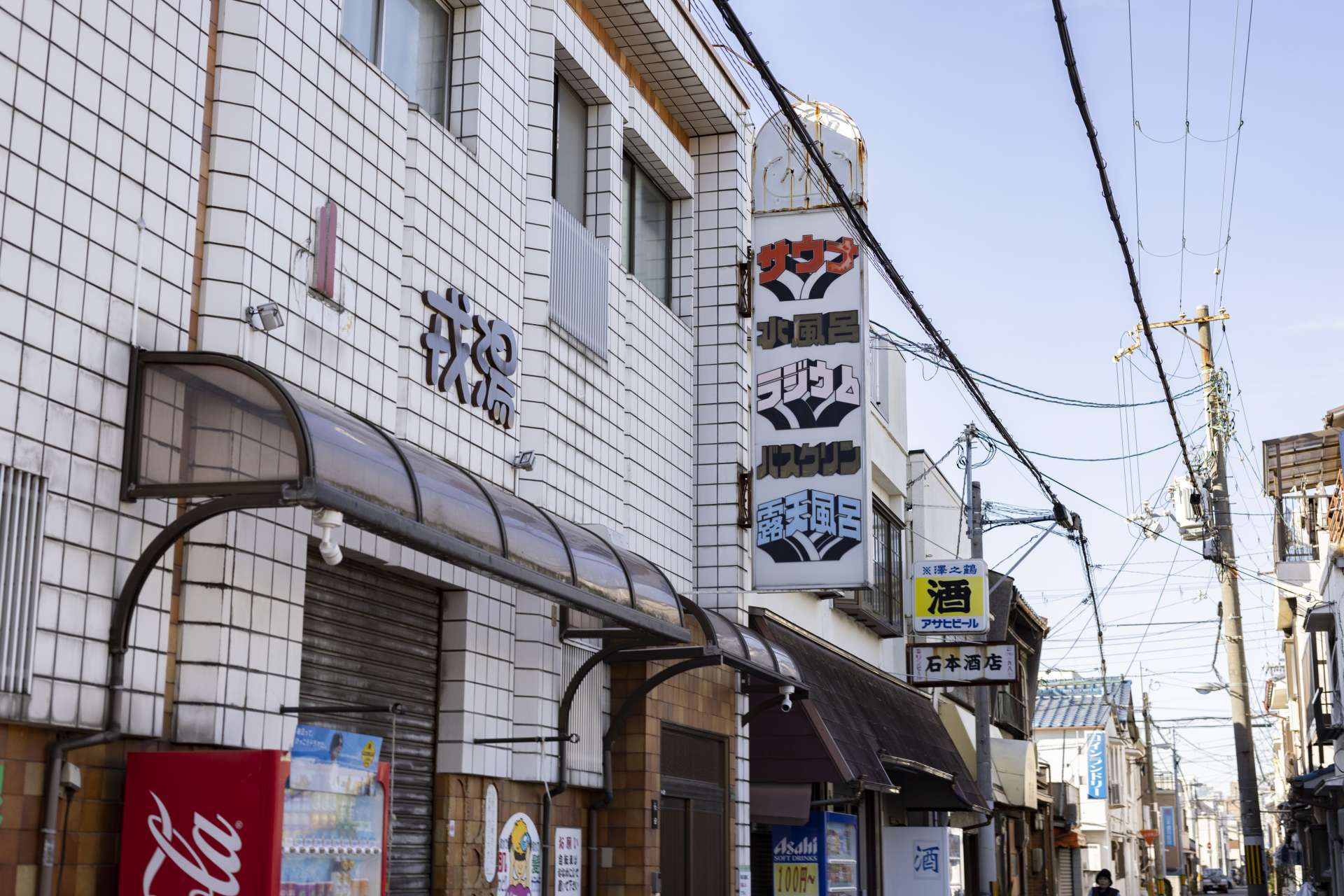
At the entrance of the retro bathhouse, Hinode-yu.
Yakuan (Katsuragi, Nara Prefecture)
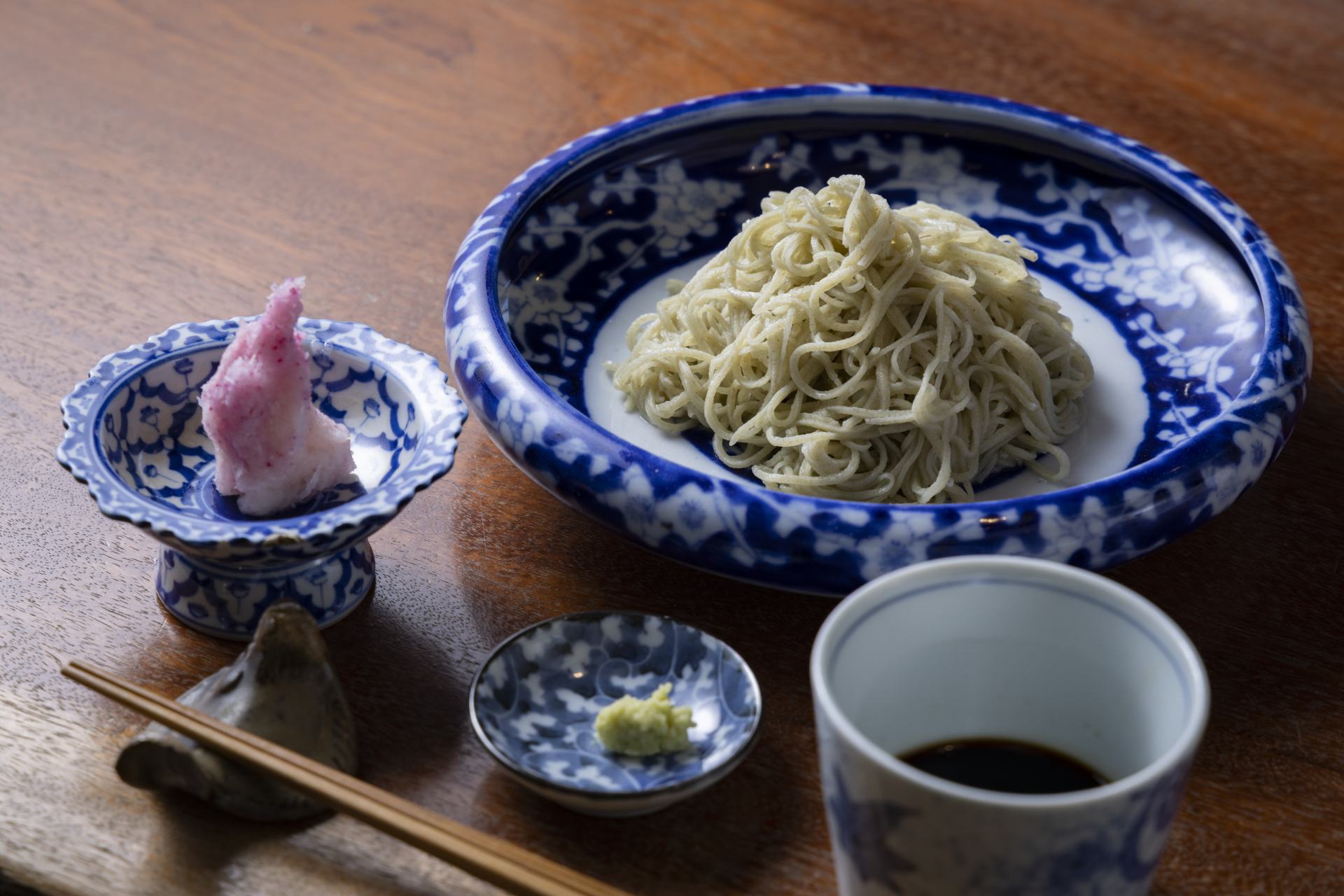
Delicious soba set made with local ingredients. The noodles are delicate, yet filling.
Next, we head to neighboring Nara prefecture to savor the taste of traditional countryside-style soba made with 100% buckwheat at Yakuan. Earthy noodles served in the welcoming ambience of a cozy Japanese home go well with toppings such as yamaimo (mountain yam) and grated daikon radish. Located at the foot of Taima-dera temple, the restaurant makes for an ideal respite before or after a guided walking tour of the temple grounds led by a Buddhist priest.
Taima-dera Temple (Katsuragi, Nara Prefecture)
Known for their annual Princess Chujo Mandala Festival, the temple offers breathtaking history, centuries-old architecture, and well-preserved religious artifacts. The tour allows visitors to learn about its history and get a glimpse into hidden facets of the temple, providing insights not available on a solo visit – making it a truly worthwhile experience.
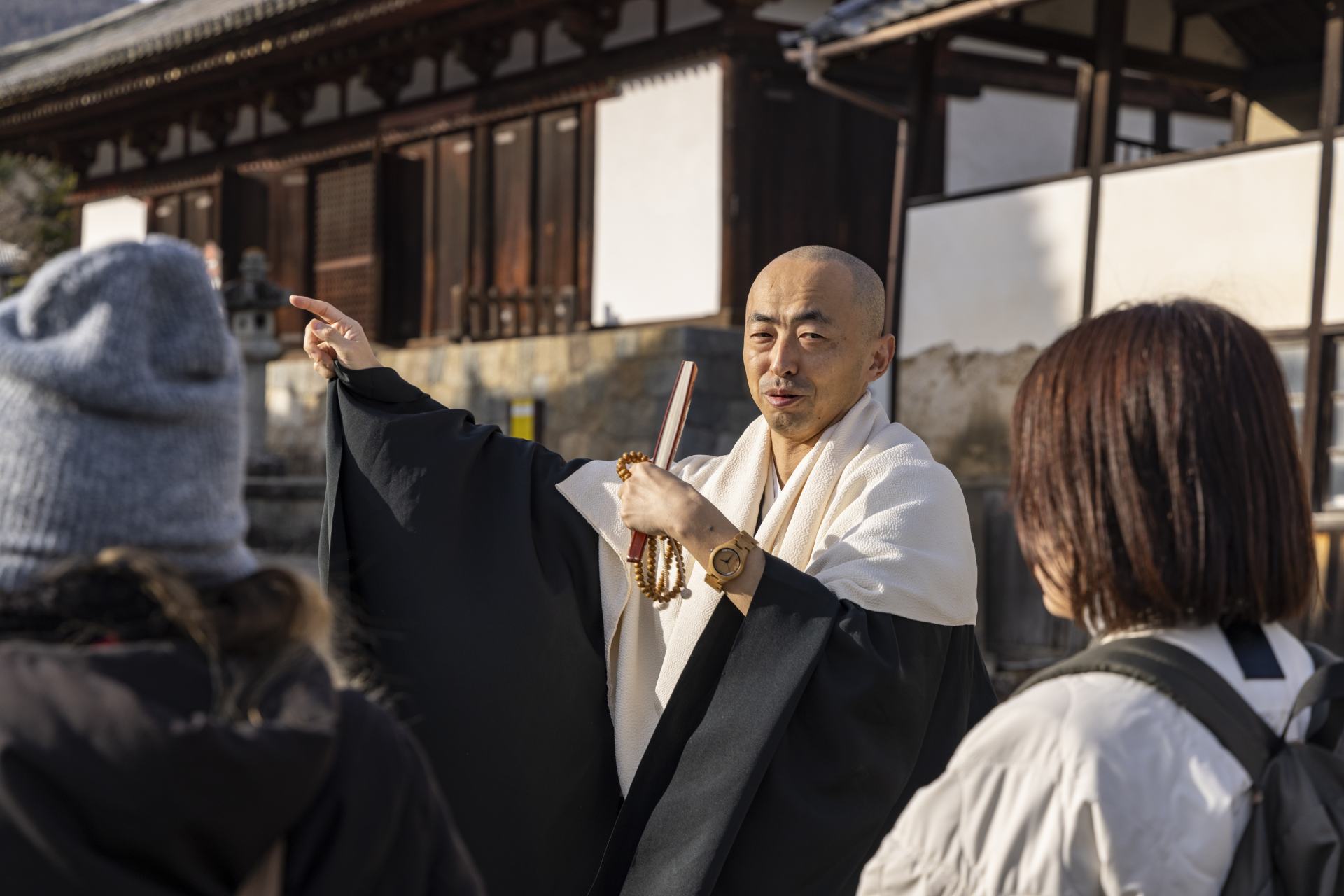
Getting a private tour by the temple’s monk is a great way to pique your curiosity in order to have your questions answered and discover new aspects of historic temples.
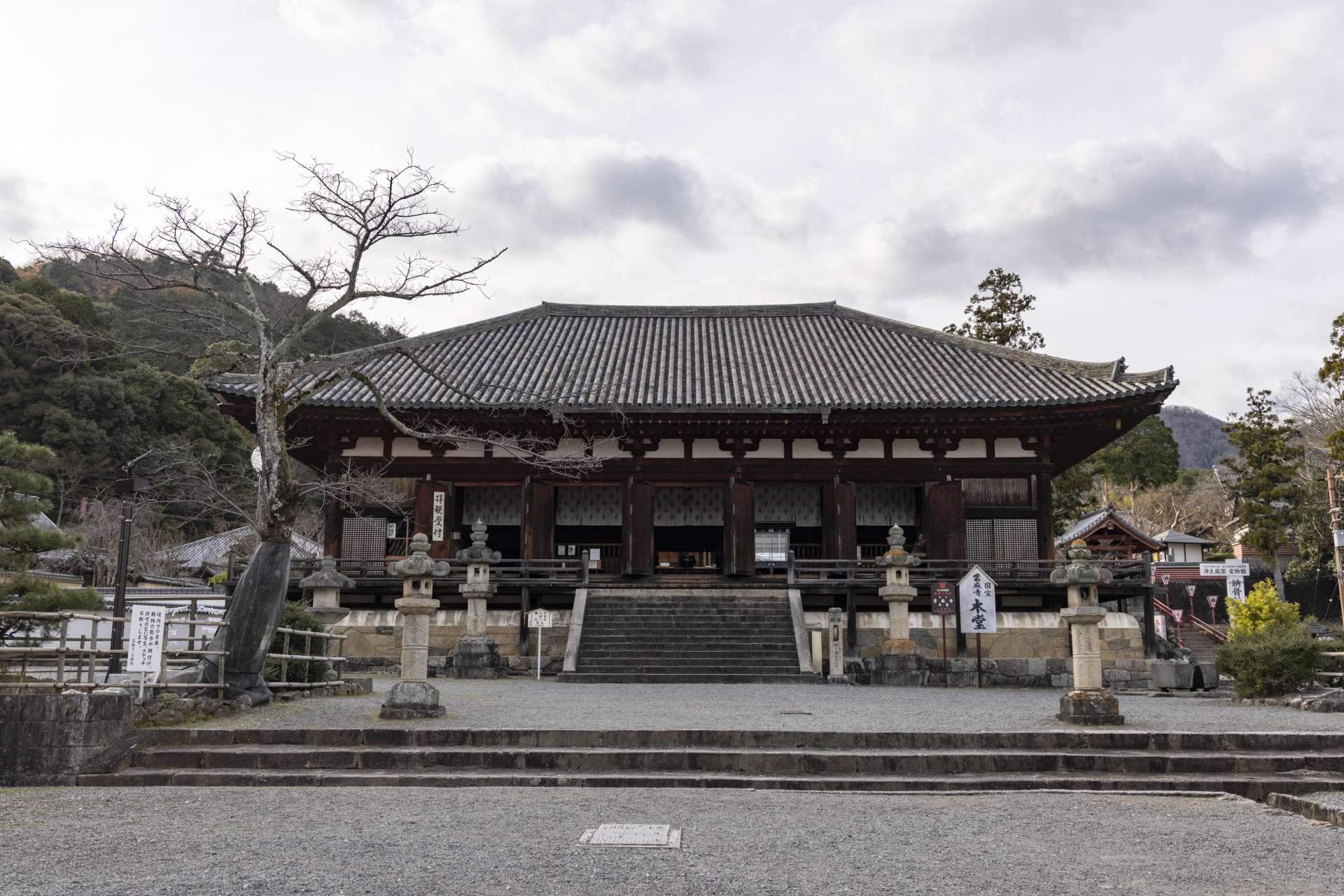
On the grounds of Taima-dera temple.
Kehayaza Sumo Museum (Katsuragi, Nara Prefecture)
A brief ten-minute stroll from Taima-dera is the Kehayaza Sumo Museum. Nara is said to be the birthplace of sumo, one of the most well-known cultural traditions of Japan. Here, visitors have the rare opportunity to step onto the dohyo (the stage where sumo matches unfold) – an honor not granted to women at official venues. While taking photos dressed in sumo attire or mastering the art of throwing salt as the professional wrestlers do, visitors can delve into the historical and cultural significance of the sport. The museum houses a wealth of archived photos and materials, offering a comprehensive exploration of this revered institution.
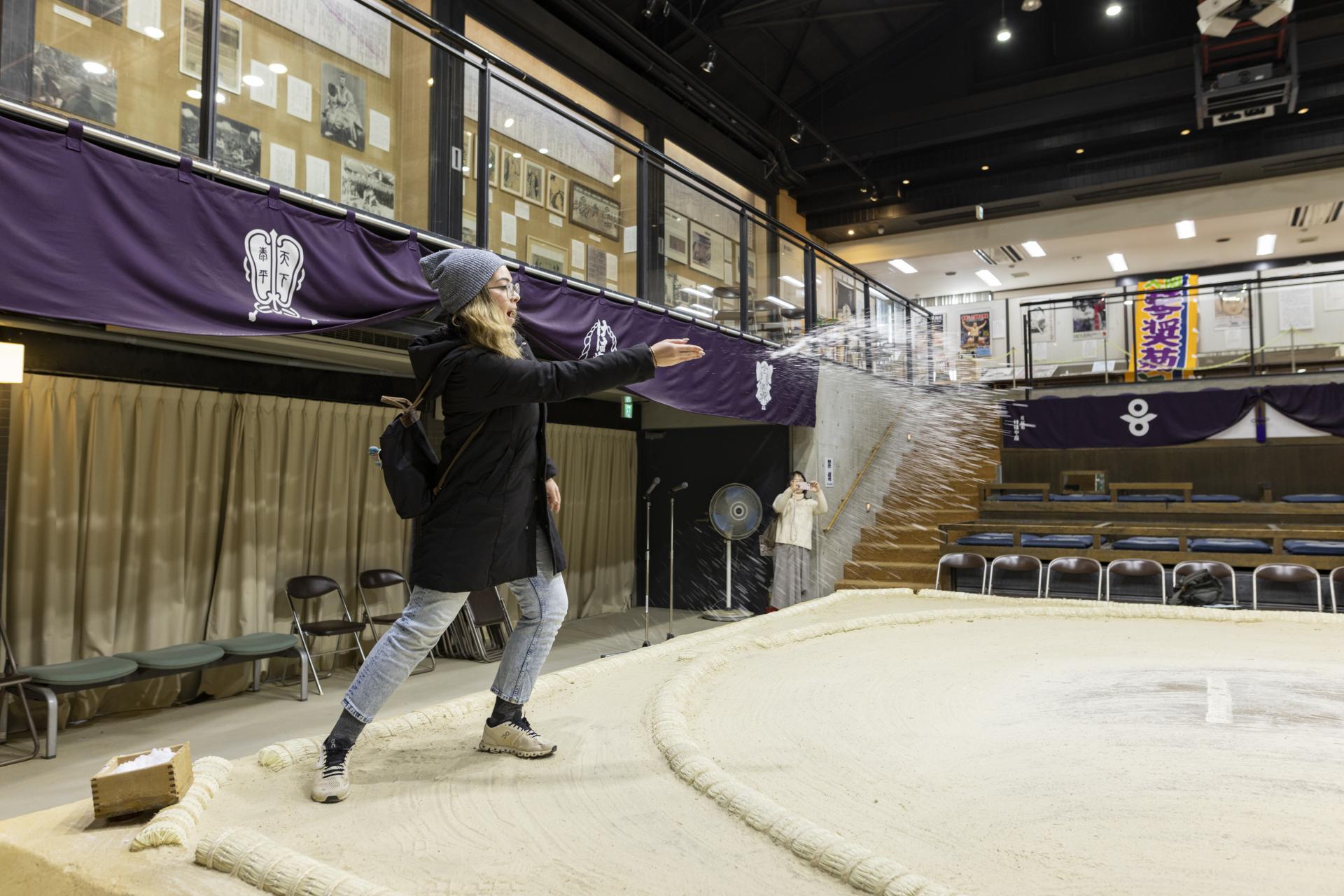
Trying my hand at throwing salt on the sumo dohyo.
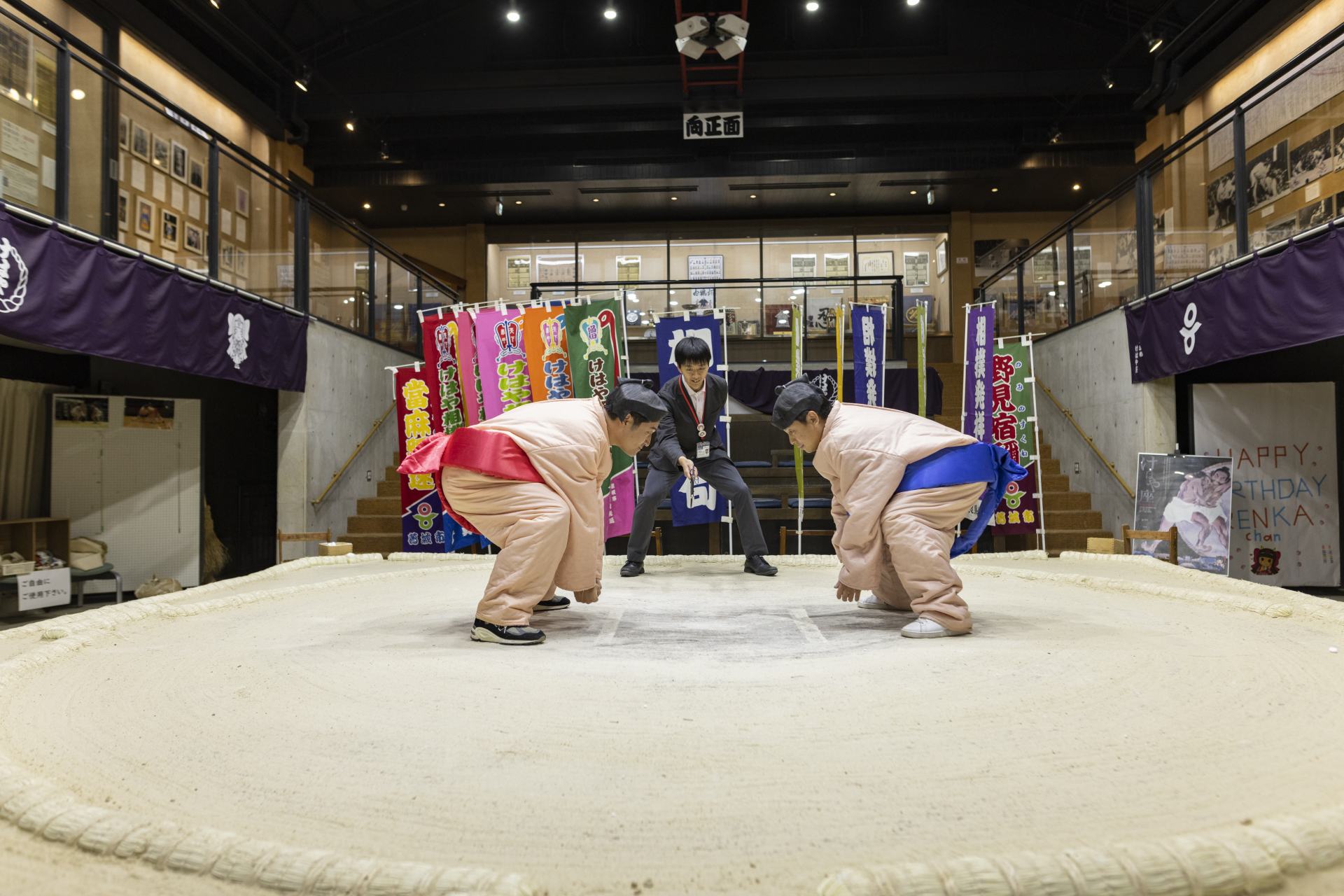
Trying our hand at sumo at the Kehayaza Sumo Museum, a unique place where visitors are allowed on the dohyo stage.
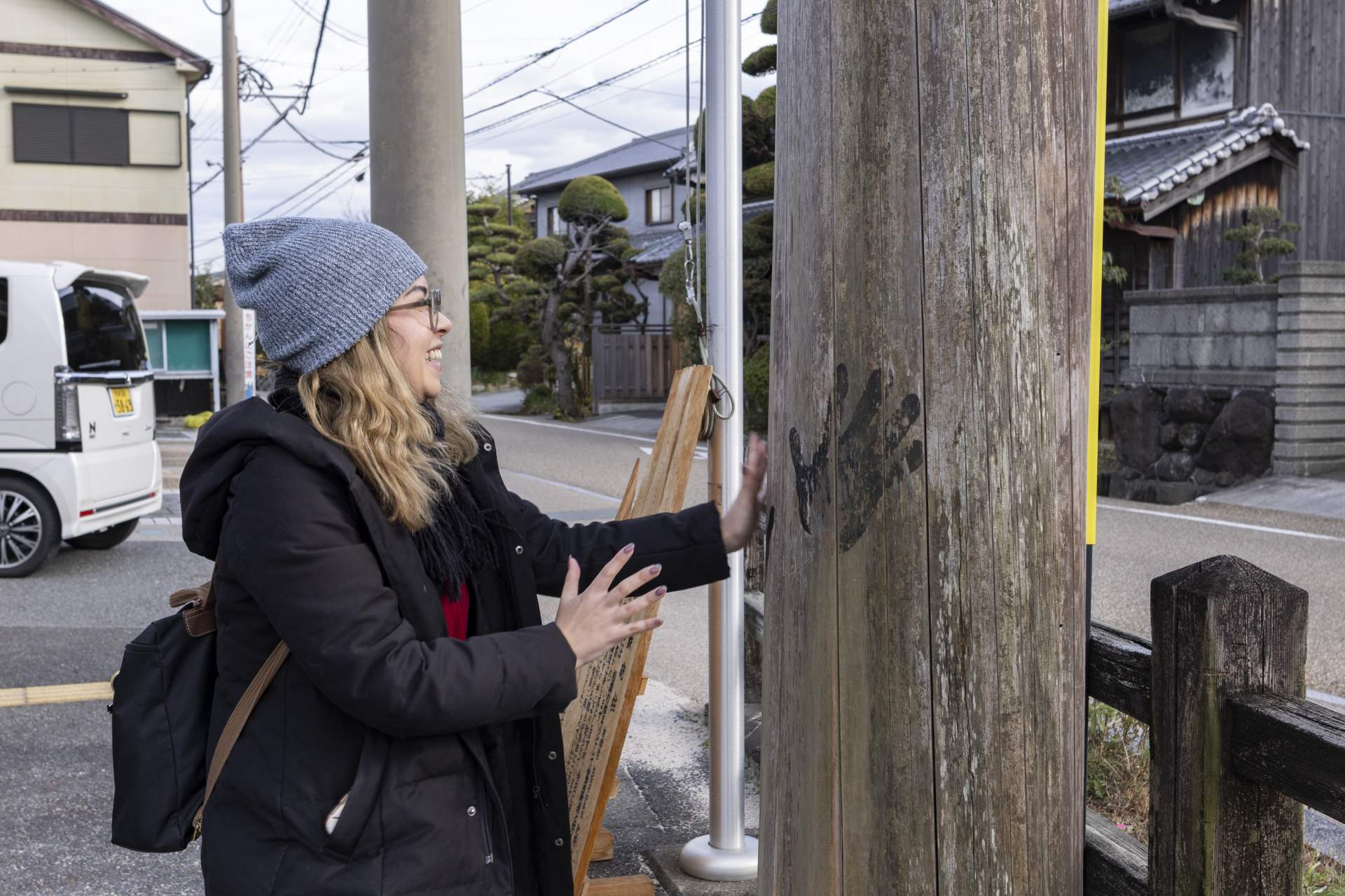
Comparing my hand size to professional sumo.
Shima Kanko Hotel The Classic (Ise-Shima, Mie Prefecture)
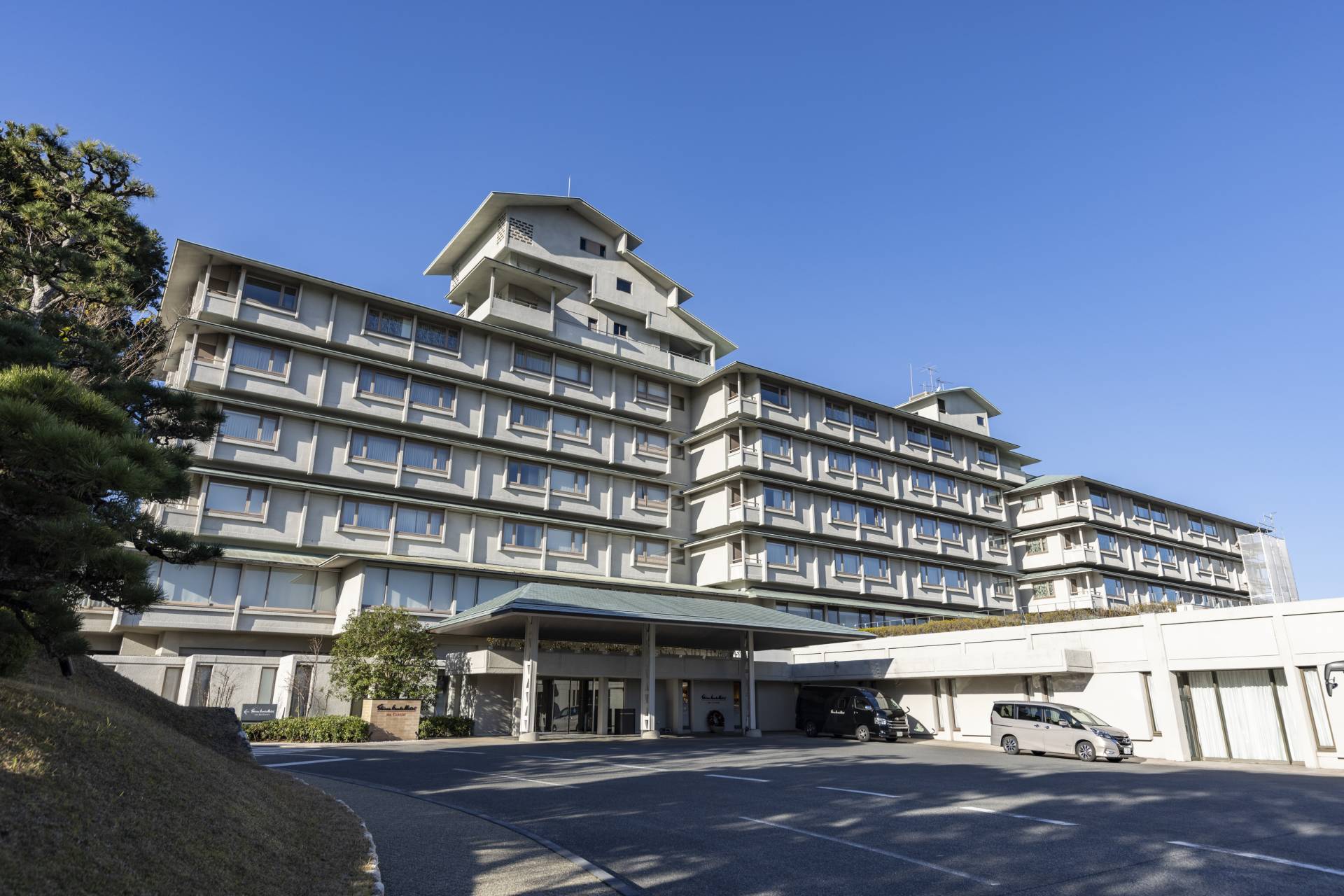
The hotel looks over the water, making it a comfortable sleep with the perfect view to wake up to.
End the day with a luxurious stay at Shima Kanko Hotel The Classic, located in Ise-Shima, Mie Prefecture. This four-star hotel, perched above Ago Bay, is committed to sustainability, evident in its hospitality practices and especially its culinary offerings at La Mer The Classic. The restaurant’s courses showcase local ingredients, with an emphasis on delicious seafood that is synonymous with the region, such as ise-ebi (Japanese spiny lobster) and abalone. Featuring relaxing lounges, a private pier, fitness center, and charming shops selling locally-sourced crafts, the hotel serves as a gateway to the captivating wonders of Mie, which will be further explored on day two.
Mikimoto Pearl Island (Toba, Mie Prefecture)
The first stop on the second day is Mikimoto Pearl Island, which is credited with starting the cultured pearl industry in the 1890s. The museum offers an in-depth look at the scientific occurrence of pearls, as well as the development and process of creating cultured pearls as we know them today. Famous pearl crowns and temple figurines are also on display. Adjacent to Ise Bay, museum visitors can watch ama divers demonstrate their 2,000-year-old tradition five to seven times a day, while narrations help viewers understand the process. One of the features is the divers’ isobue whistling, which helps them regulate their breathing in cold water and has been included in the 100 Soundscapes of Japan.
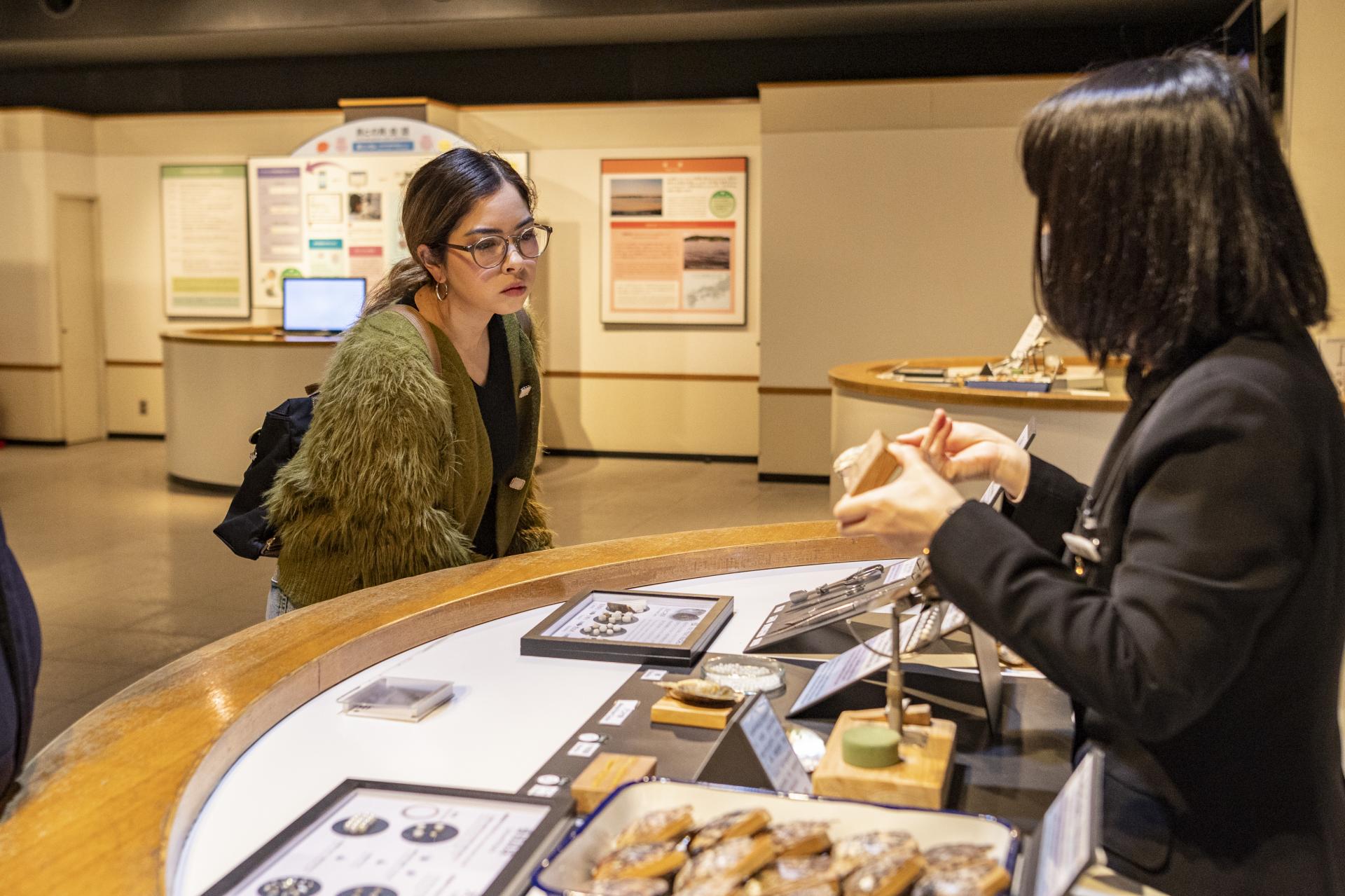
Learning about the pearl-making process from staff at the Mikimoto Pearl Island museum. They are very knowledgeable and were happy to answer many of my curious questions.
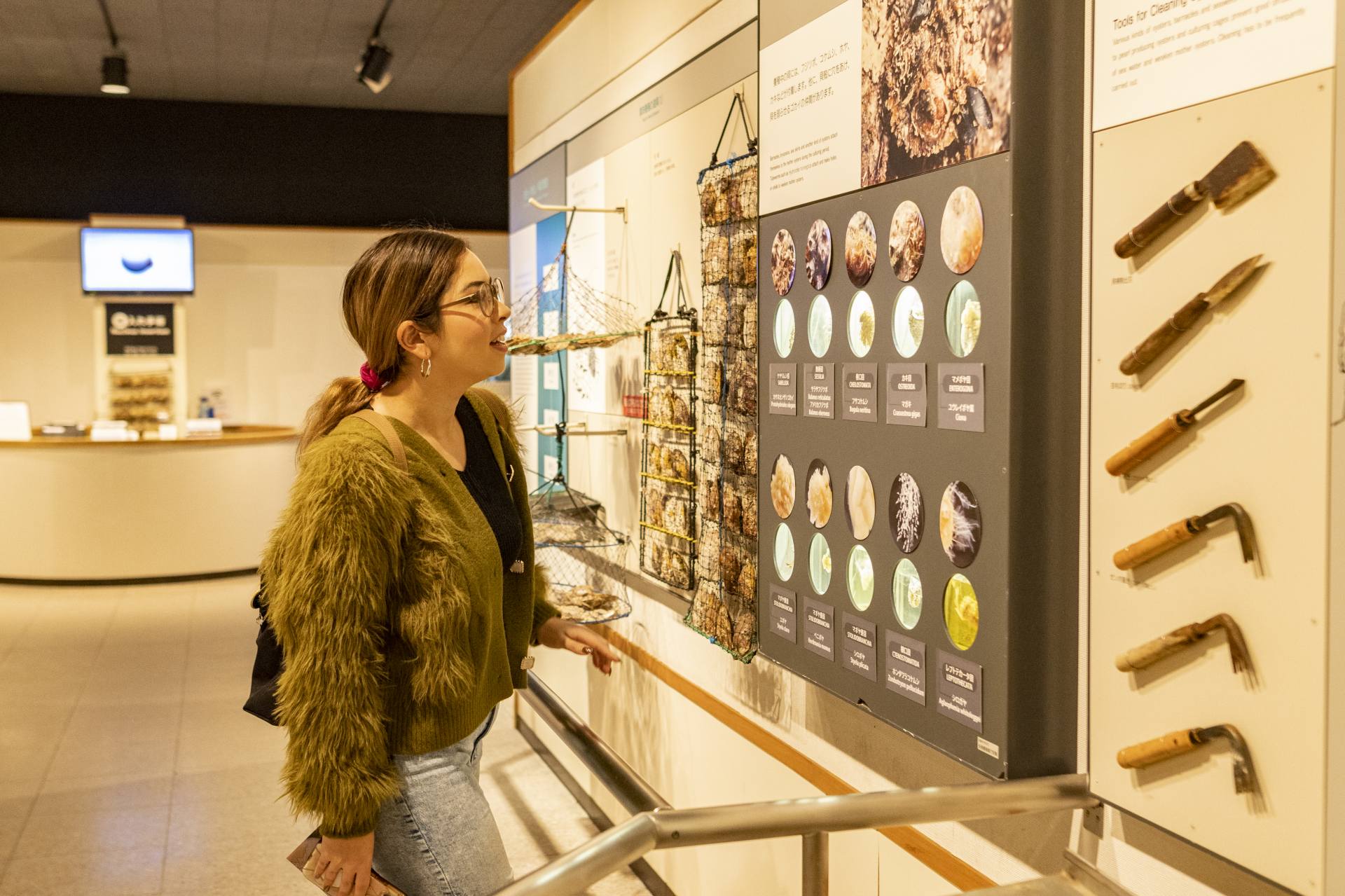
There are many fascinating artifacts and images that lay out the evolution of the pearl-making industry.
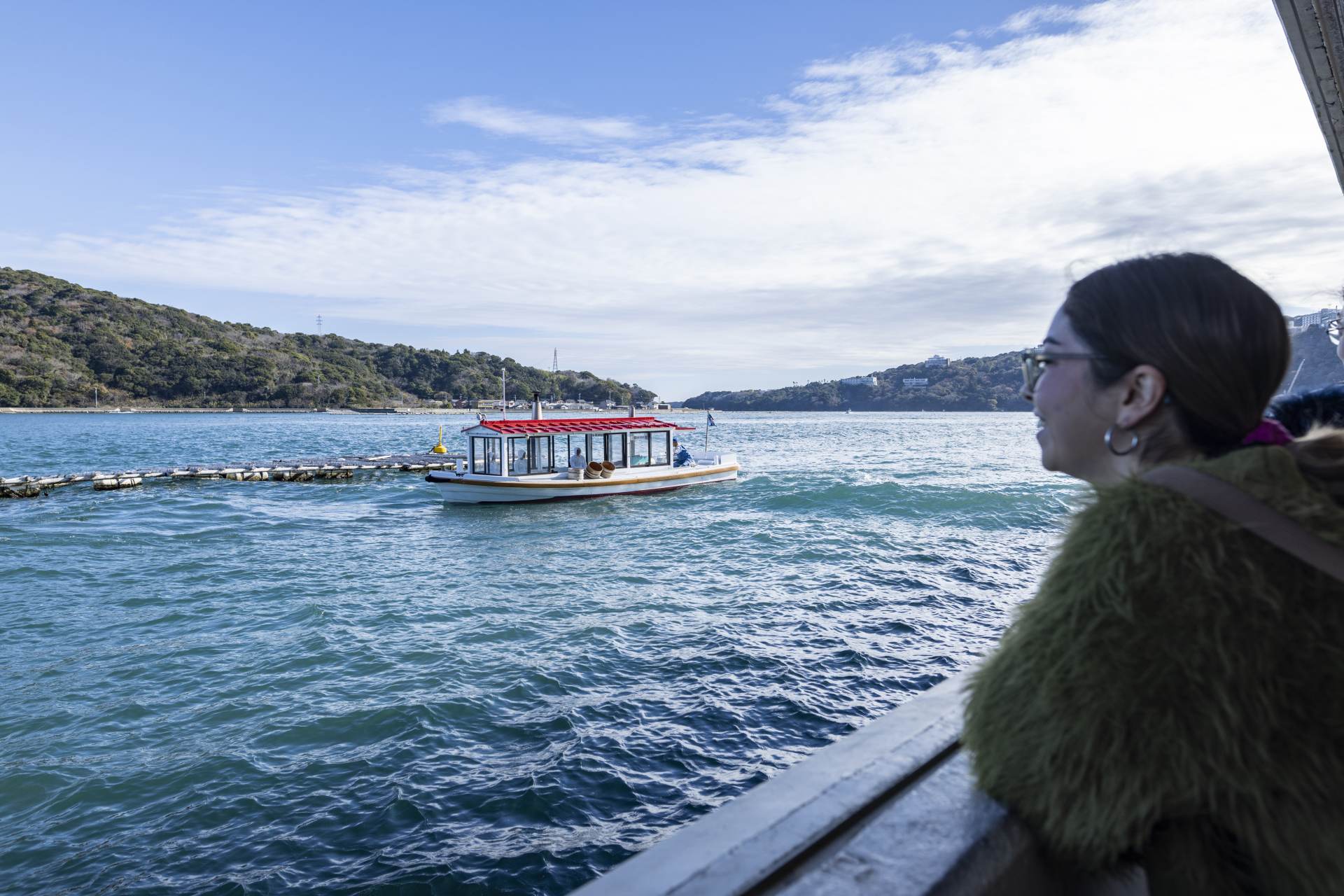
Watching the pearl diving demonstration by ama diver women at Mikimoto Pearl Island, one of their most sought-after attractions.
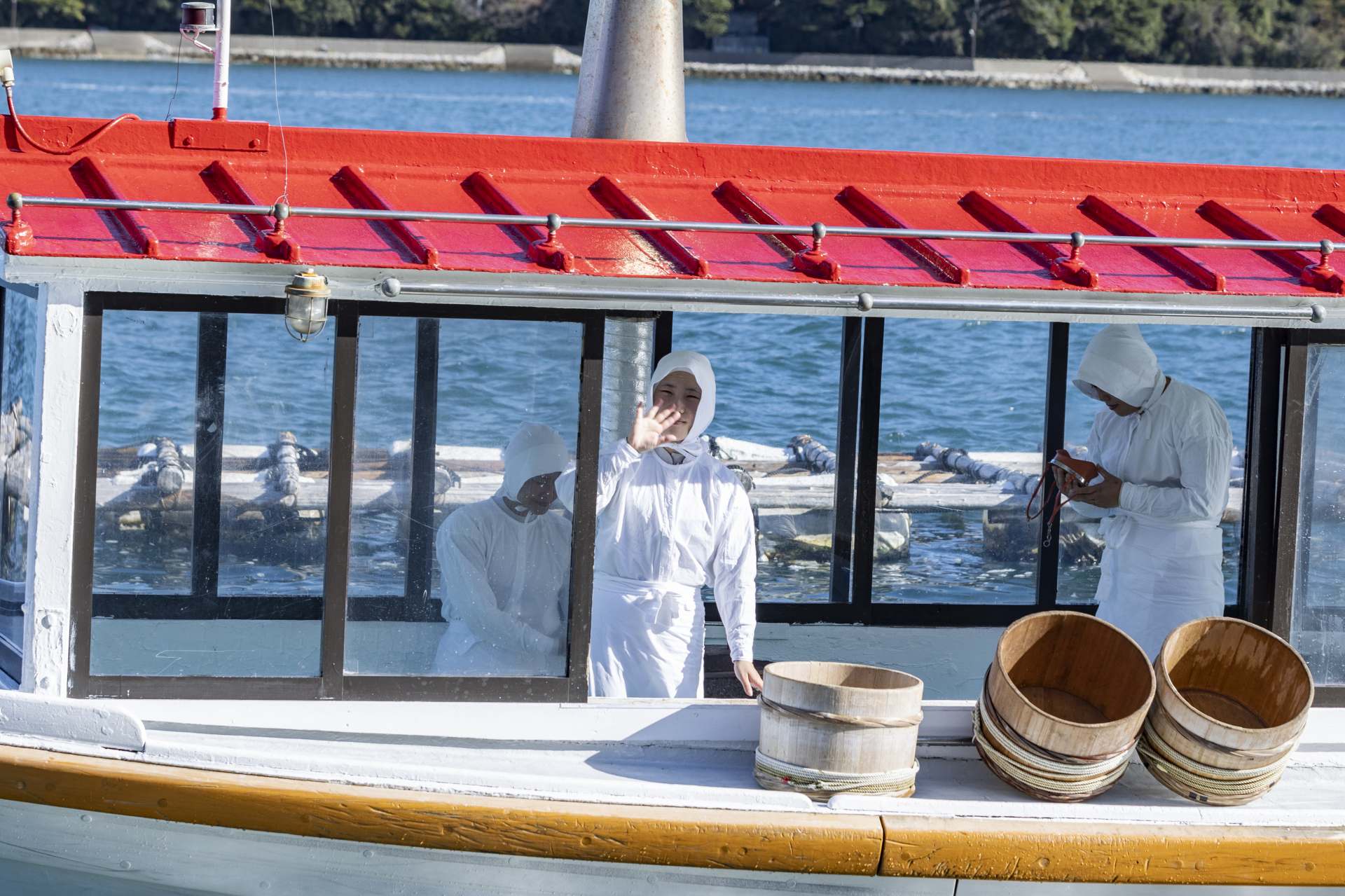
The ama divers have been diving in this region for over 2000 years. Women who came from other regions as brides often had to know how to swim and dive in order to be able to support their families and industry.
Ama Hut Hachiman,Hachiman Kamado (Toba, Mie Prefecture)
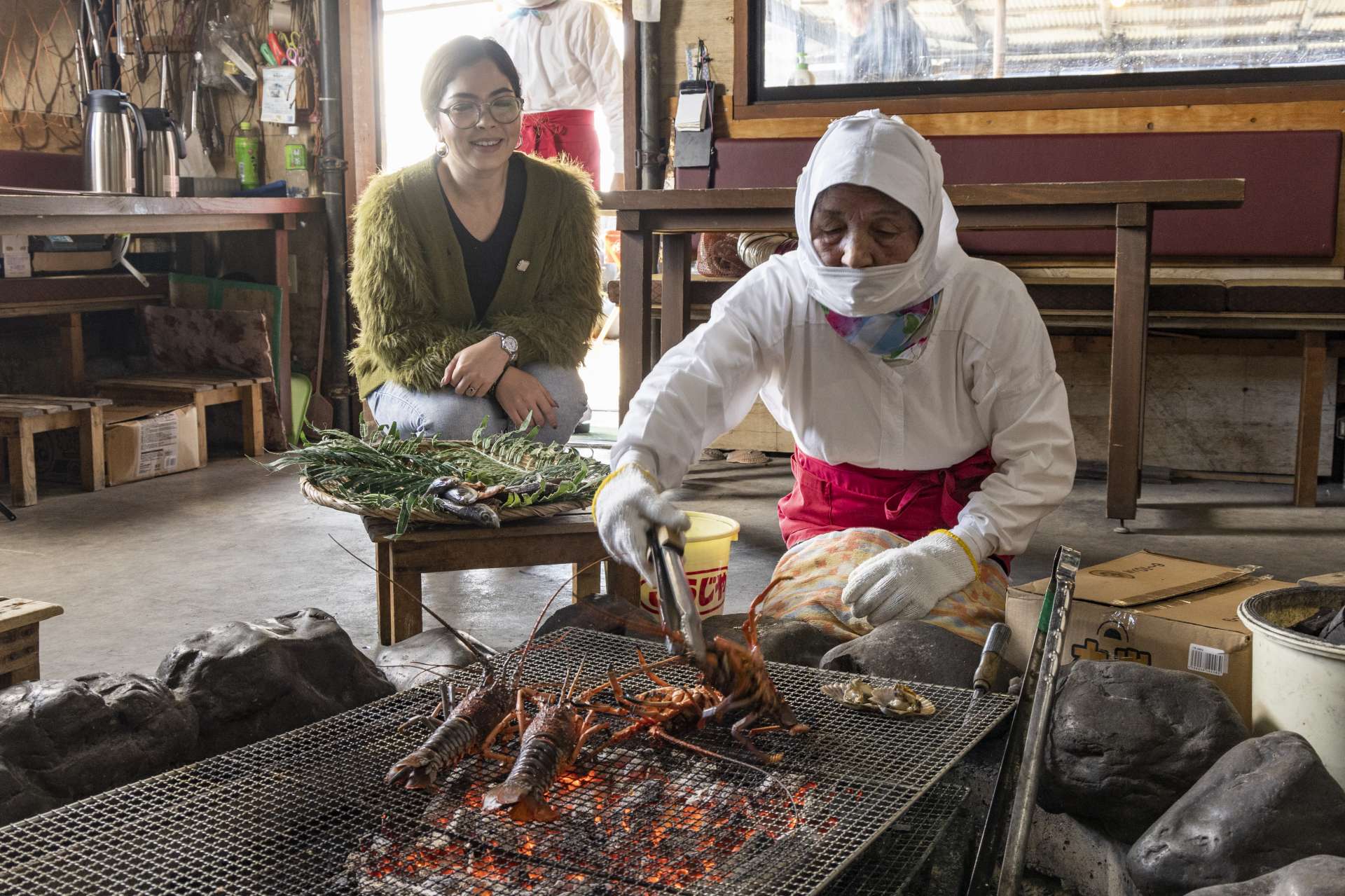
The ama women grill their fresh bounty for us, right in front of our eyes.
To continue diving deep into ama culture, we head to Ama Hut Hachiman (Hachiman Kamado) for lunch, where veteran ama divers tell tales of their historical and cultural significance over a grilled seafood meal made from the fruits of their labor – so fresh, that the ise-ebi were still wiggling on the grill. Note that the hut also offers vegan meal options. Ama diving is an eco-friendly and sustainable way of fishing seafoods such as ise-ebi, clams, oysters, and octopus because it is done by hand. It also empowers women, who were traditionally preferred over men because of their biological and physical ability to stay in cold waters for longer periods. It is also a socially sustainable practice and traditional part of community building, especially for the divers who enjoy socializing around the fire after their dives. The head of the restaurant, an energetic 92-year-old woman who worked as an ama diver until she was 80, greeted us and helped prepare our meal. This was followed by a fun Q&A, the chance to don traditional ama wear, and dancing together. Hearing the stories of these women’s life-long experiences is a truly empowering way to feel closer to unique Japanese traditions and ways of life.
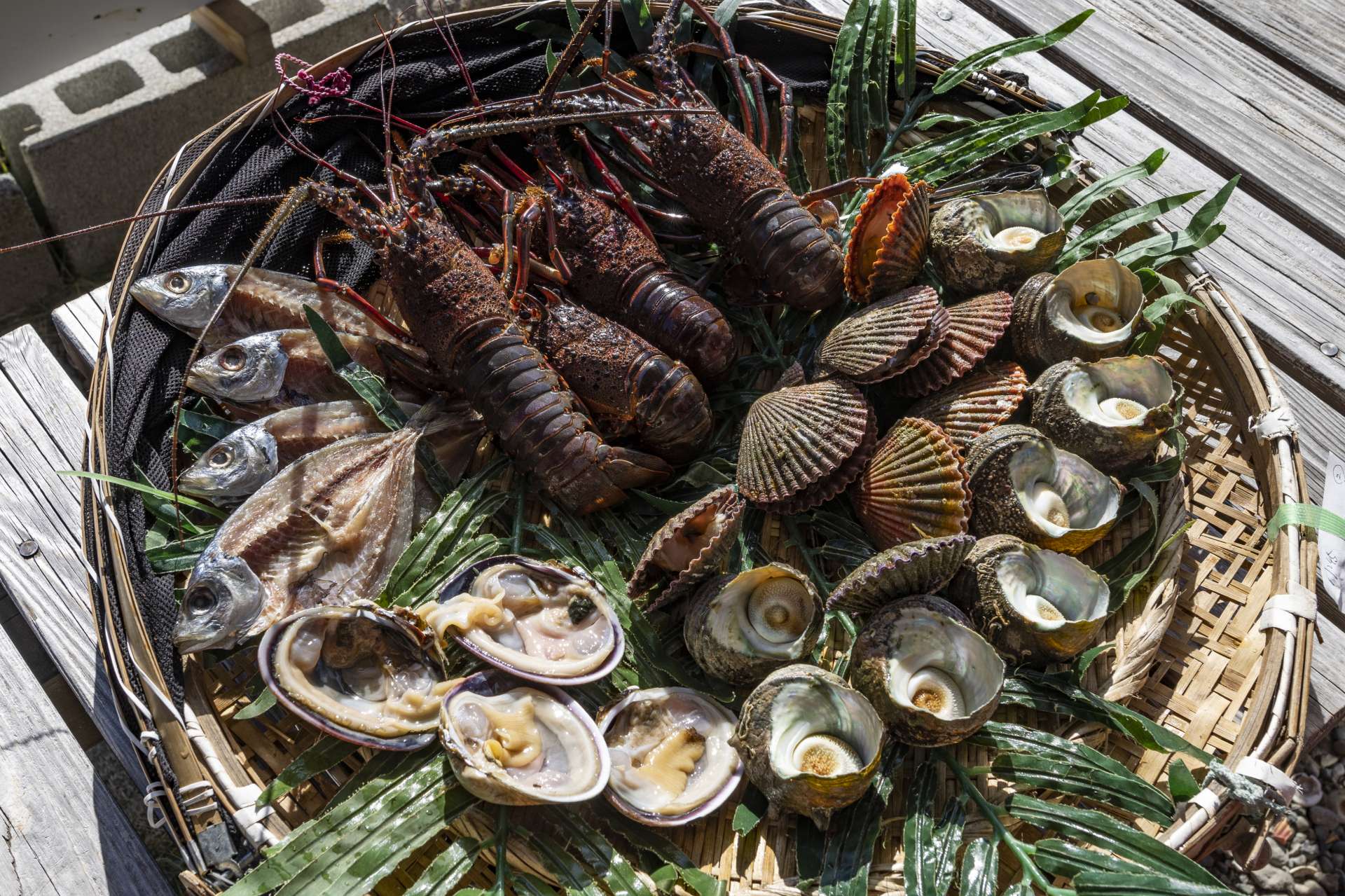
The freshly caught seafood by the ama divers at the Ama Hut “Hachiman Kamado”.
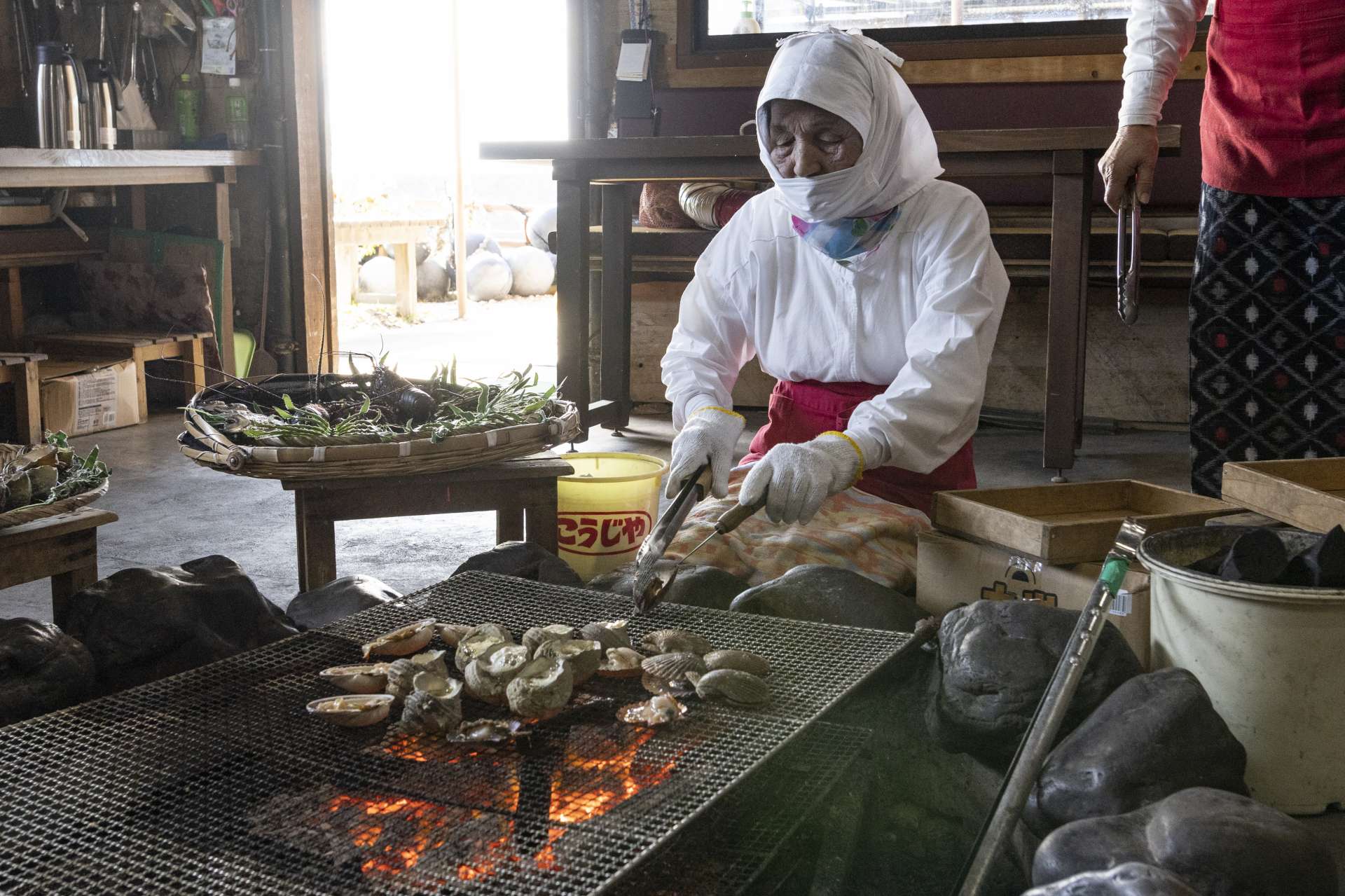
Retired ama divers help welcome guests to the restaurant, where they continue to share their food and culture with us.
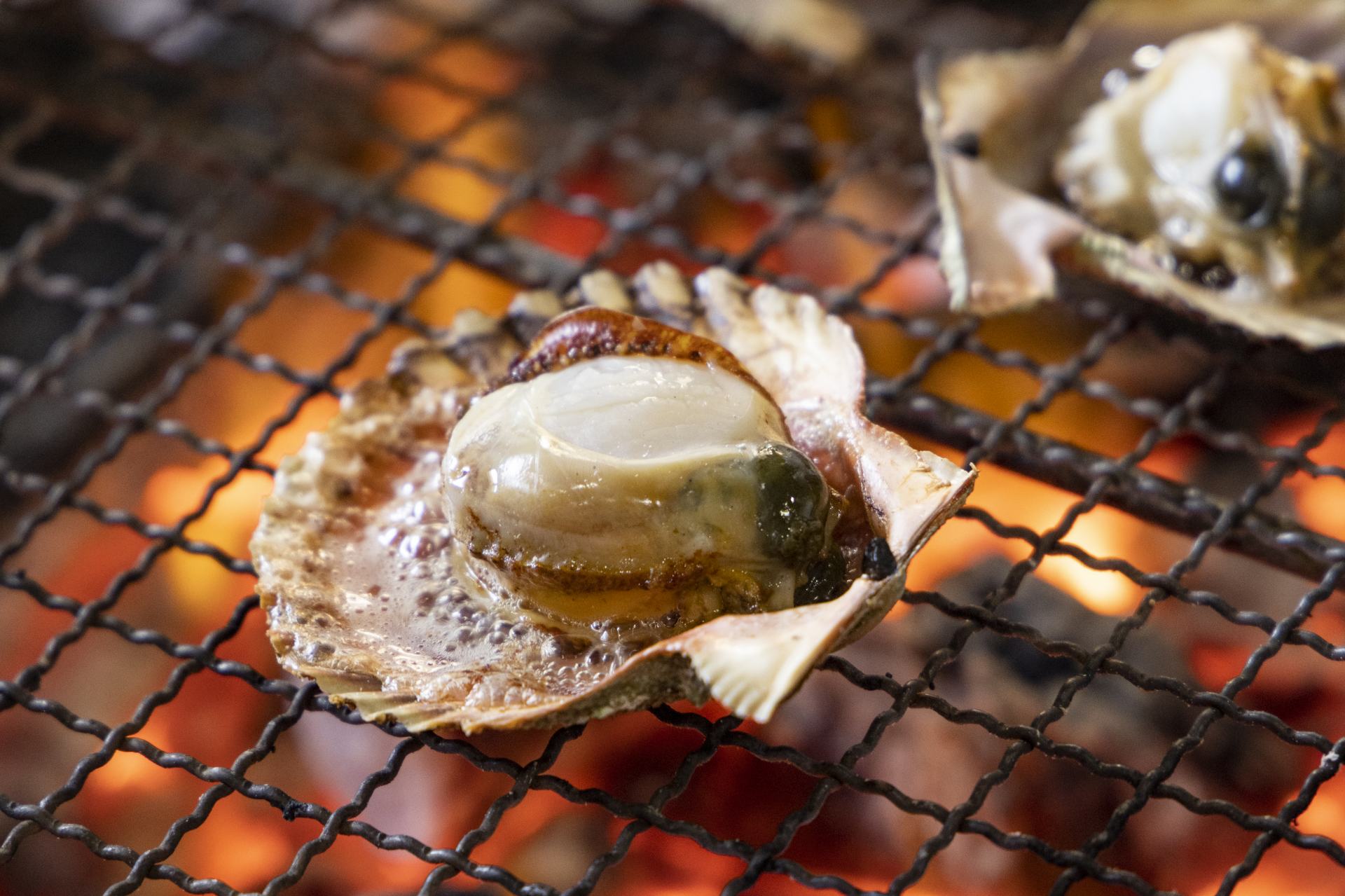
Fresh scallop on the grill.
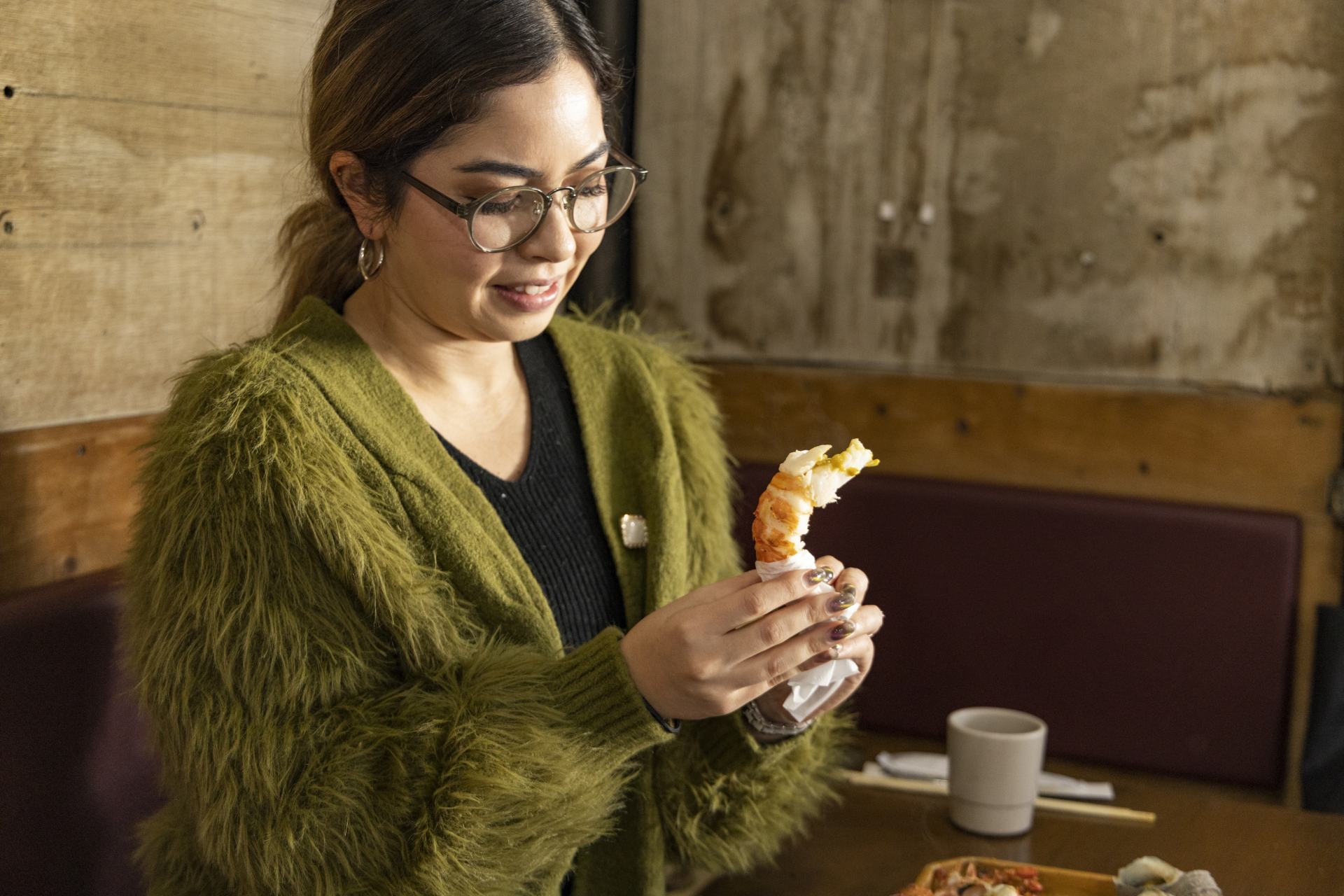
Eating the freshly caught, freshly grilled ise-ebi lobster that cracks right off its shells.

Dancing to the traditional ama diver song. Similar to the dance at Japanese Bon Odori, ama divers showcase this dance at such festivals.
Ise-Jingu Shrine (Ise, Mie Prefecture)
No visit to Mie is complete without exploring Ise-Jingu Shrine, one of the most sacred Shinto sites in Japan dating back as far as ama diving – 2,000 years. Dedicated to the solar goddess, Amaterasu, this shrine is a significant pilgrimage destination for many, with one in ten people making the trip during the Edo period. The grounds offer many walkable paths among large cedar trees, with the outer areas being lined with local craft stores, pearl shops, and eateries featuring local cuisine.
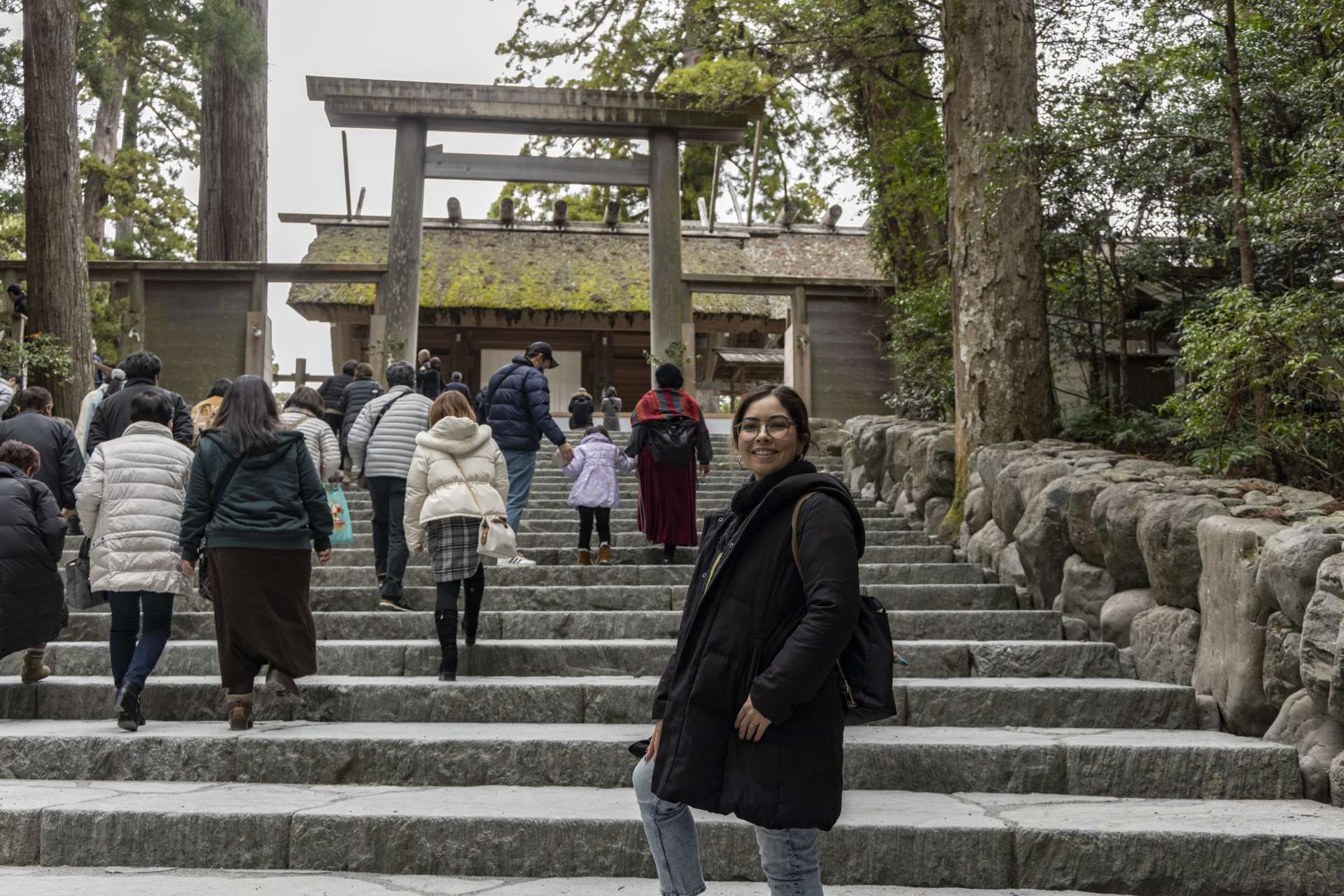
No photos past this point, but the surroundings of the shrine were powerful to be a part of.
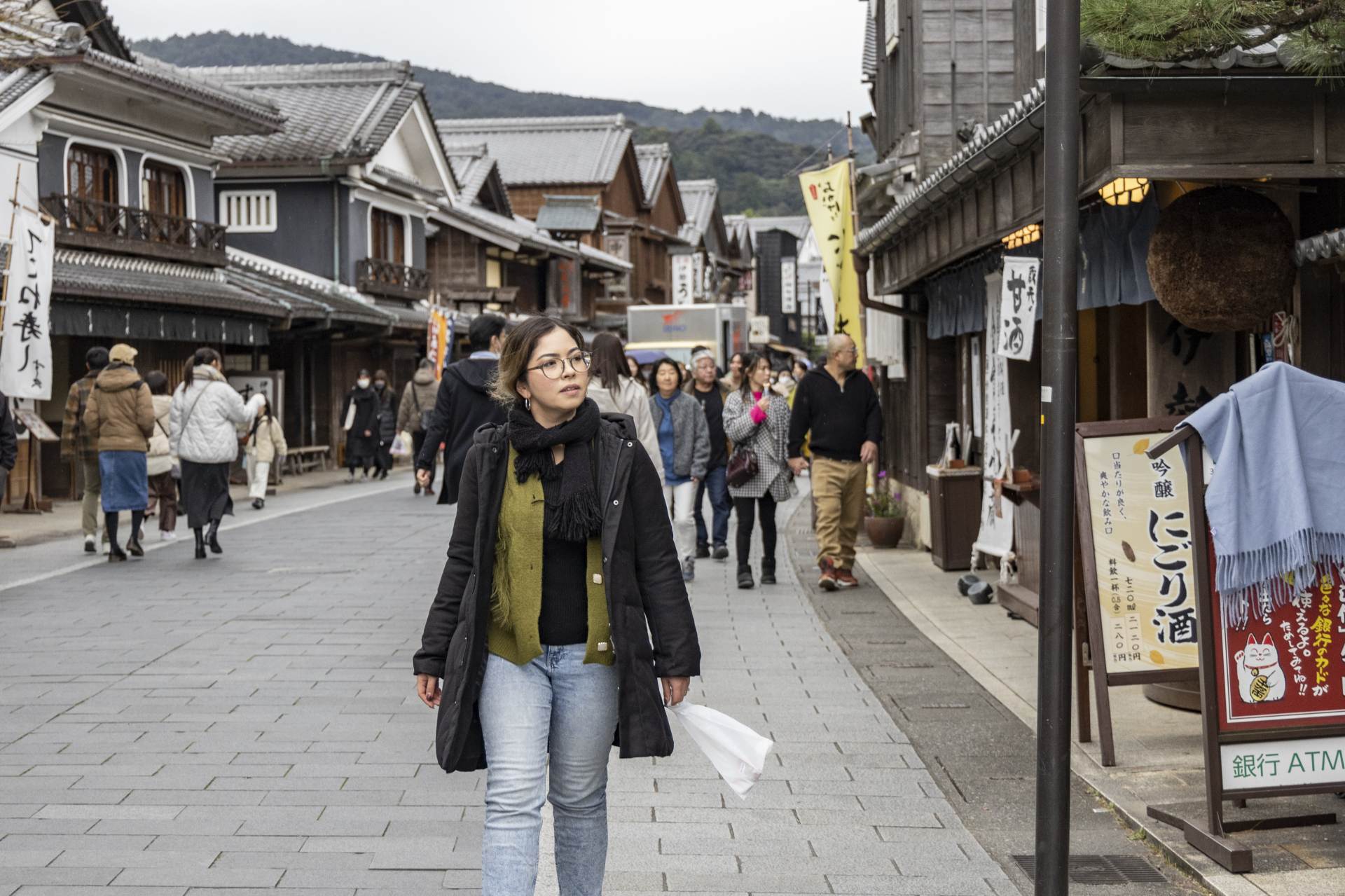
Wandering around the merchant streets outside of the shrine: the area is lively with visitors, though it must have been just as thriving back when it was a pilgrimage point for people in the Edo-period.
Vison (Takicho, Mie Prefecture)

Enjoying a snack as I walk around Vison. Such a foodie’s heaven!
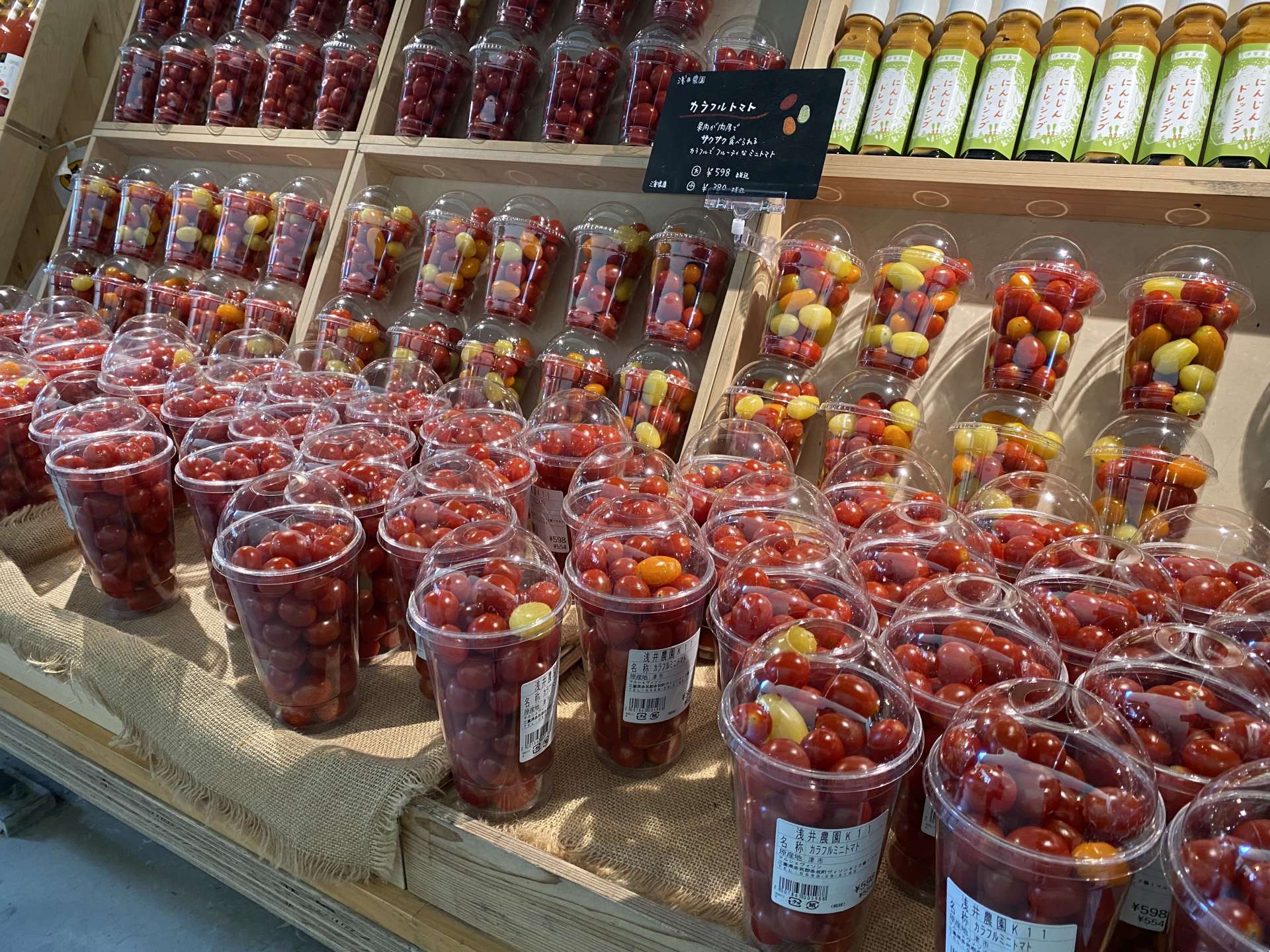
Fresh cherry tomatoes at the Vison farmer’s market. I’m not lying when I say these were the sweetest tomatoes I have ever tasted (and I eat a lot of them!).
The final stop on this trip was Vison, a modern small village complex with over 70 shops, restaurants, and activities. This is a food lover’s paradise with a built-in hotel. The grounds feature Japan’s largest farmer’s market where I tasted the sweetest tomatoes I have ever had, famous patisserie and a chef battleground (At Chef Museum), and bespoke cuisine and shops selling rice, miso, and katsuobushi (bonito flakes) to name a few. Hotel Vison features a medicinal herbal bathhouse for a spa with a difference. Dogs are welcome in the hotel as well as the dog hotel, where there is also an animal shelter for those looking to adopt a cat or dog in need of a new home. Wood crafting and other experiences are also available onsite.
In order to sustain and preserve cultural traditions and practices, it’s important that they be appreciated by others. After all, joy is often found in sharing. By interacting with locals and immersing oneself in their proud way of life, there’s hope in reviving many of these dying crafts and cultures. One way to do this is to visit these unexplored paths.
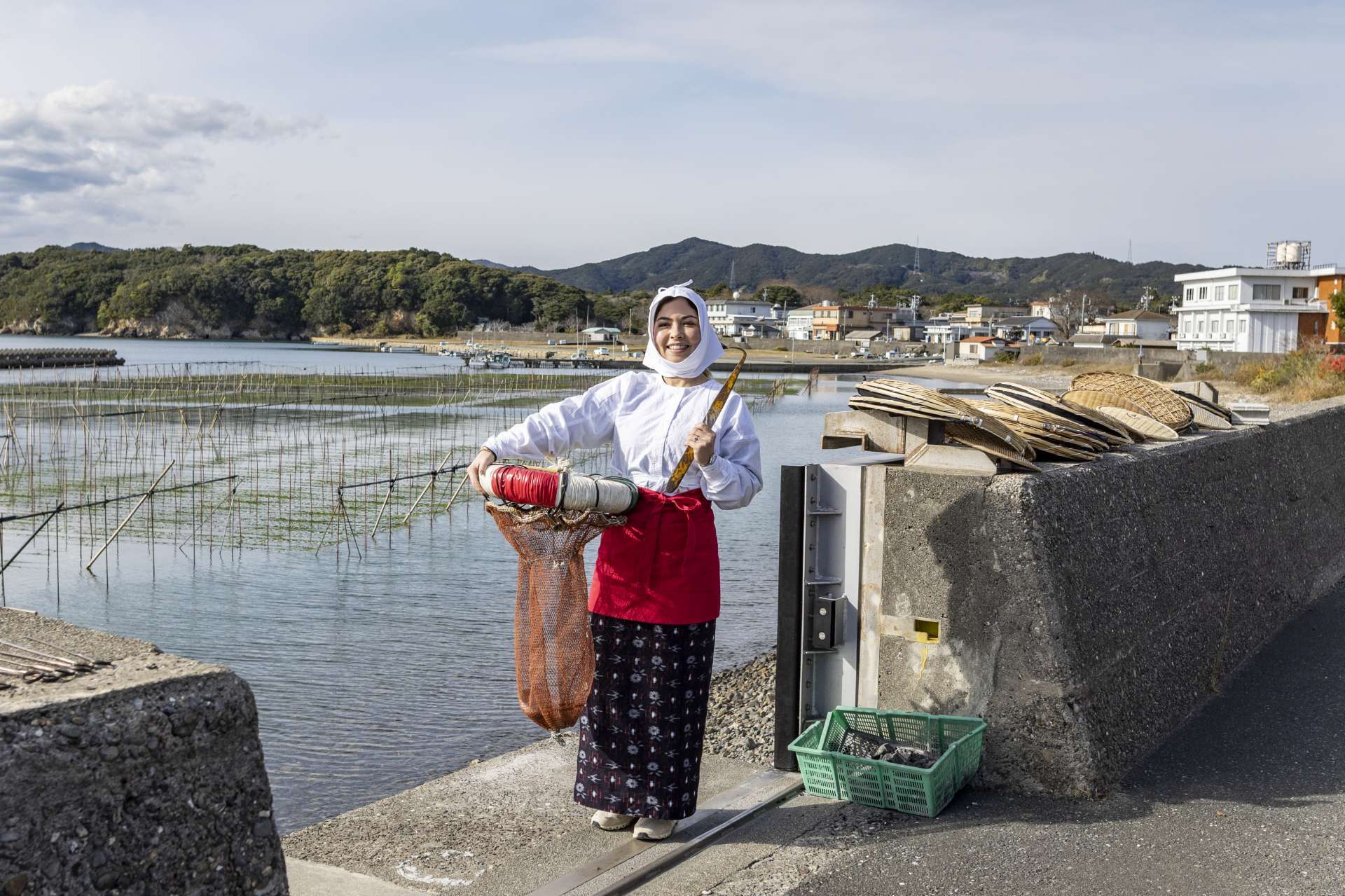
Experience dressing in the traditional ama diver wear and imagine how cold it must have been in the water!
